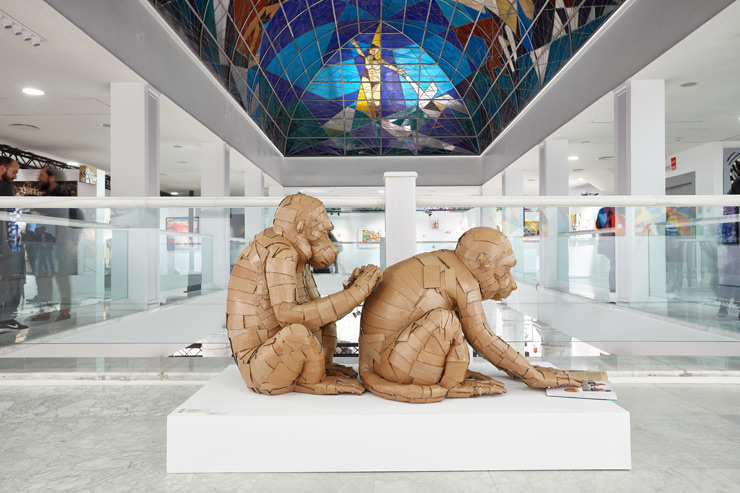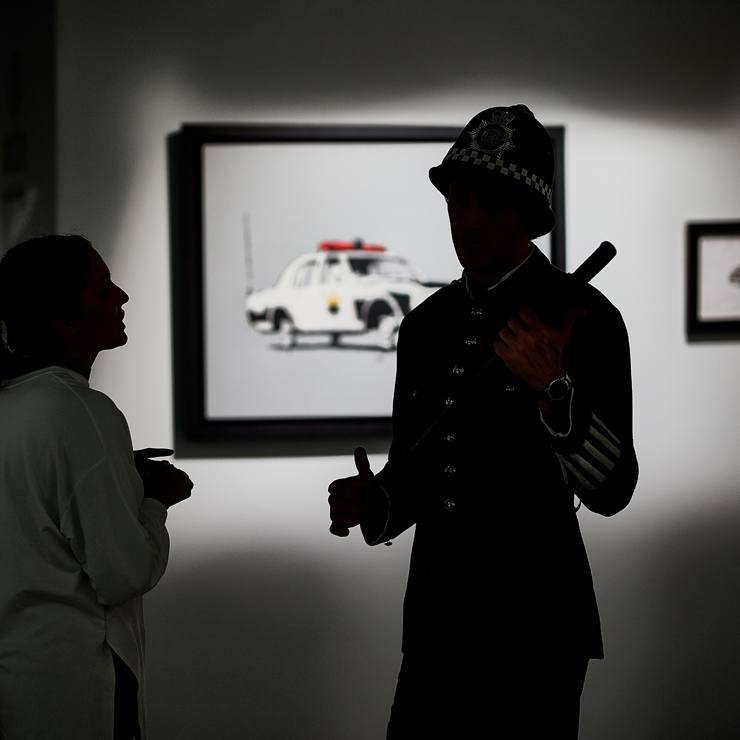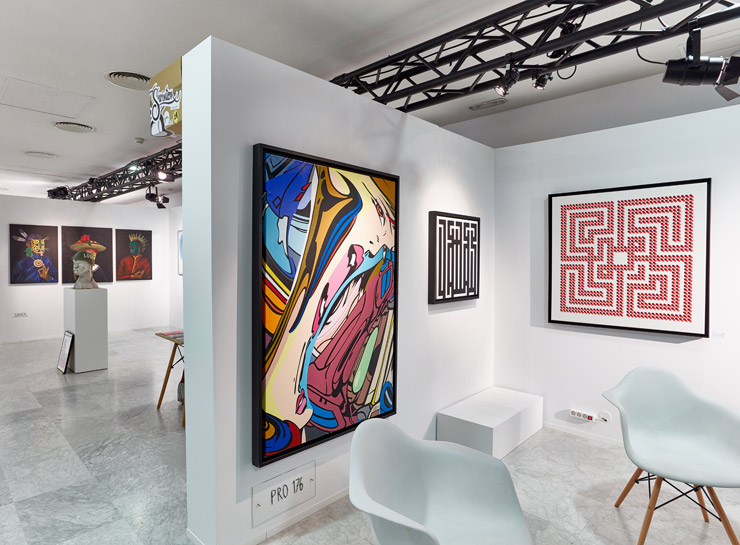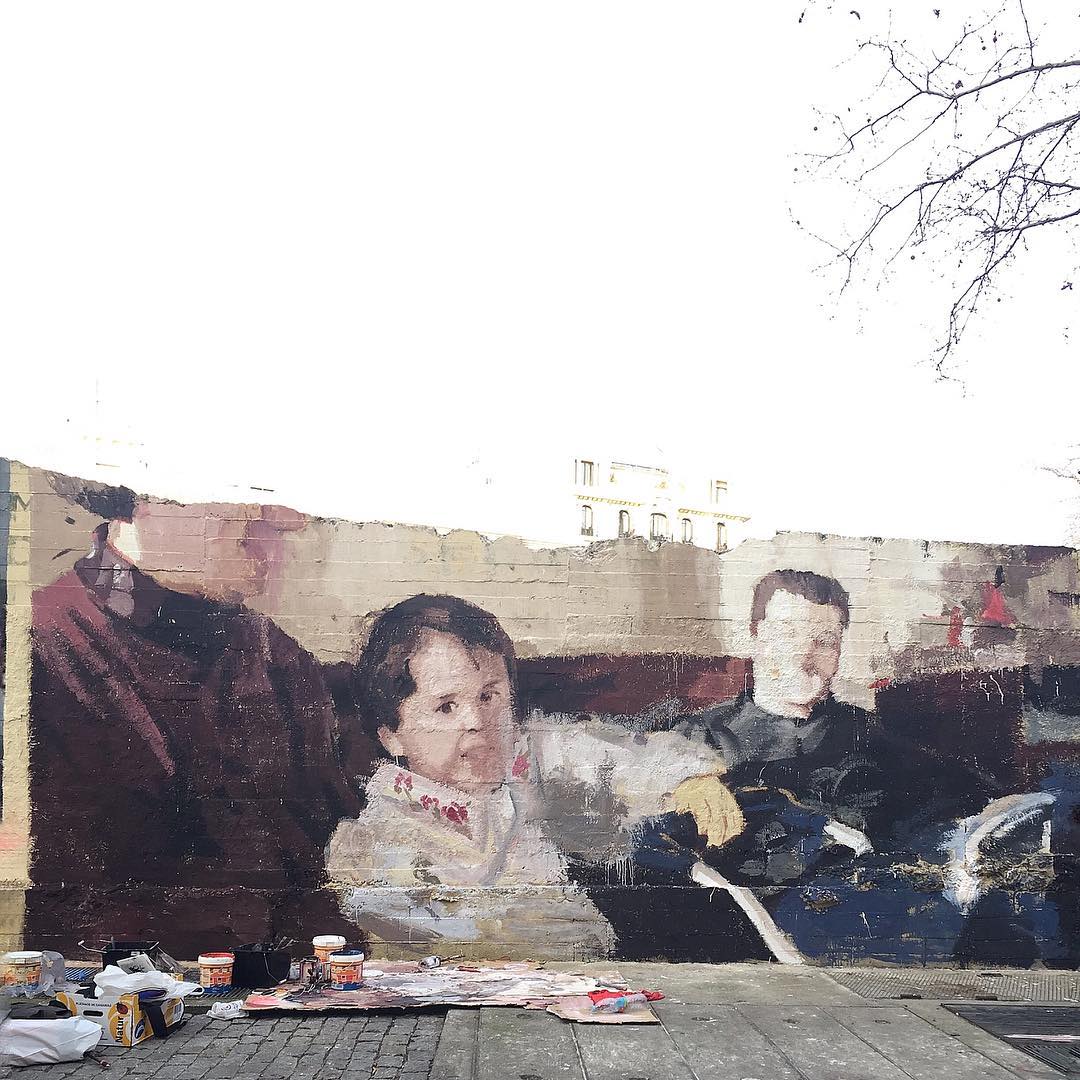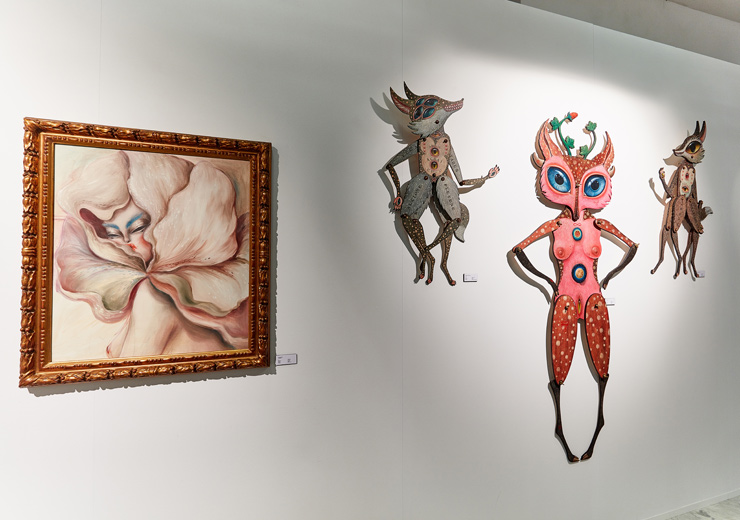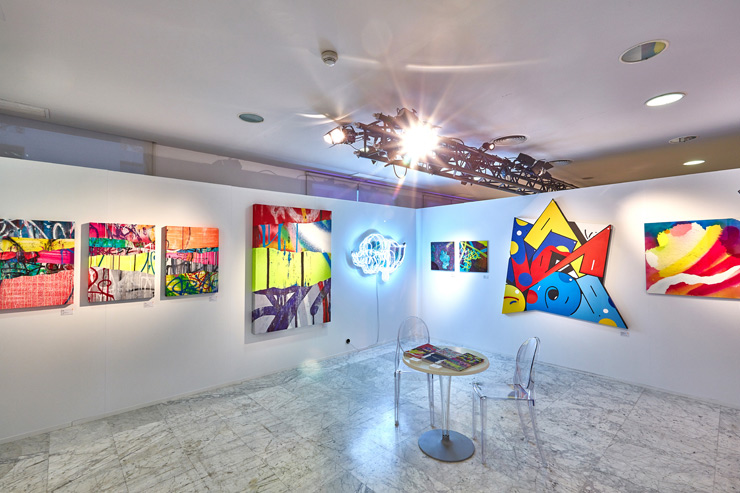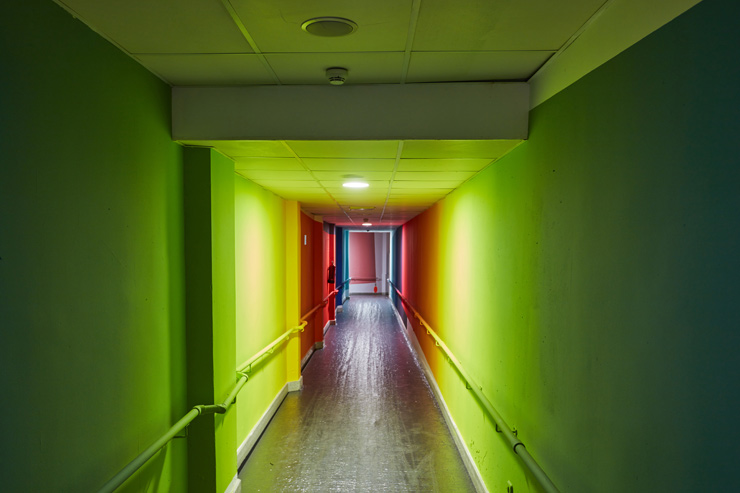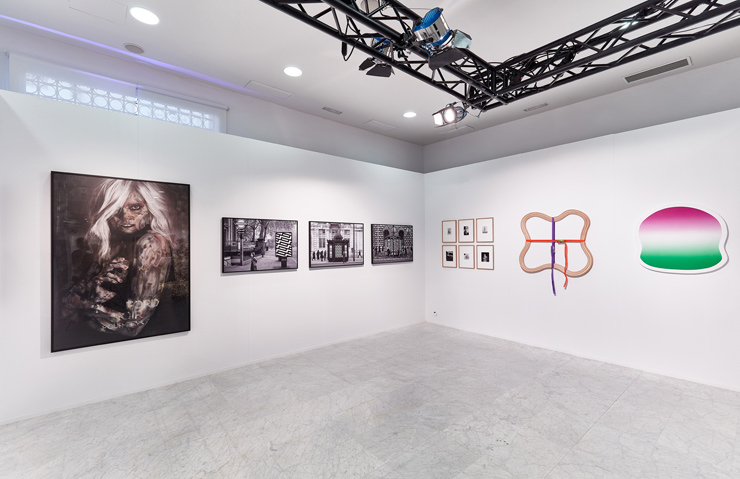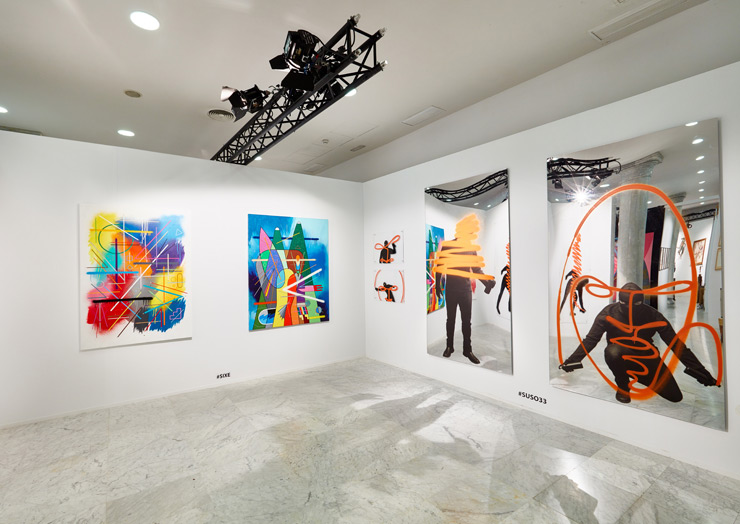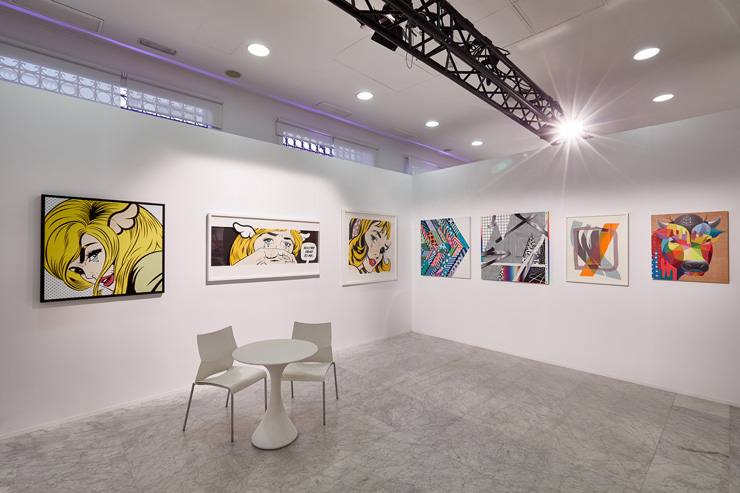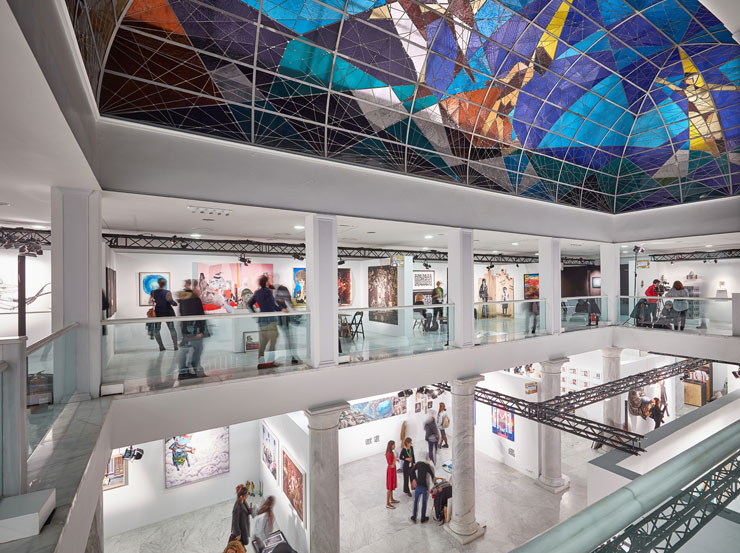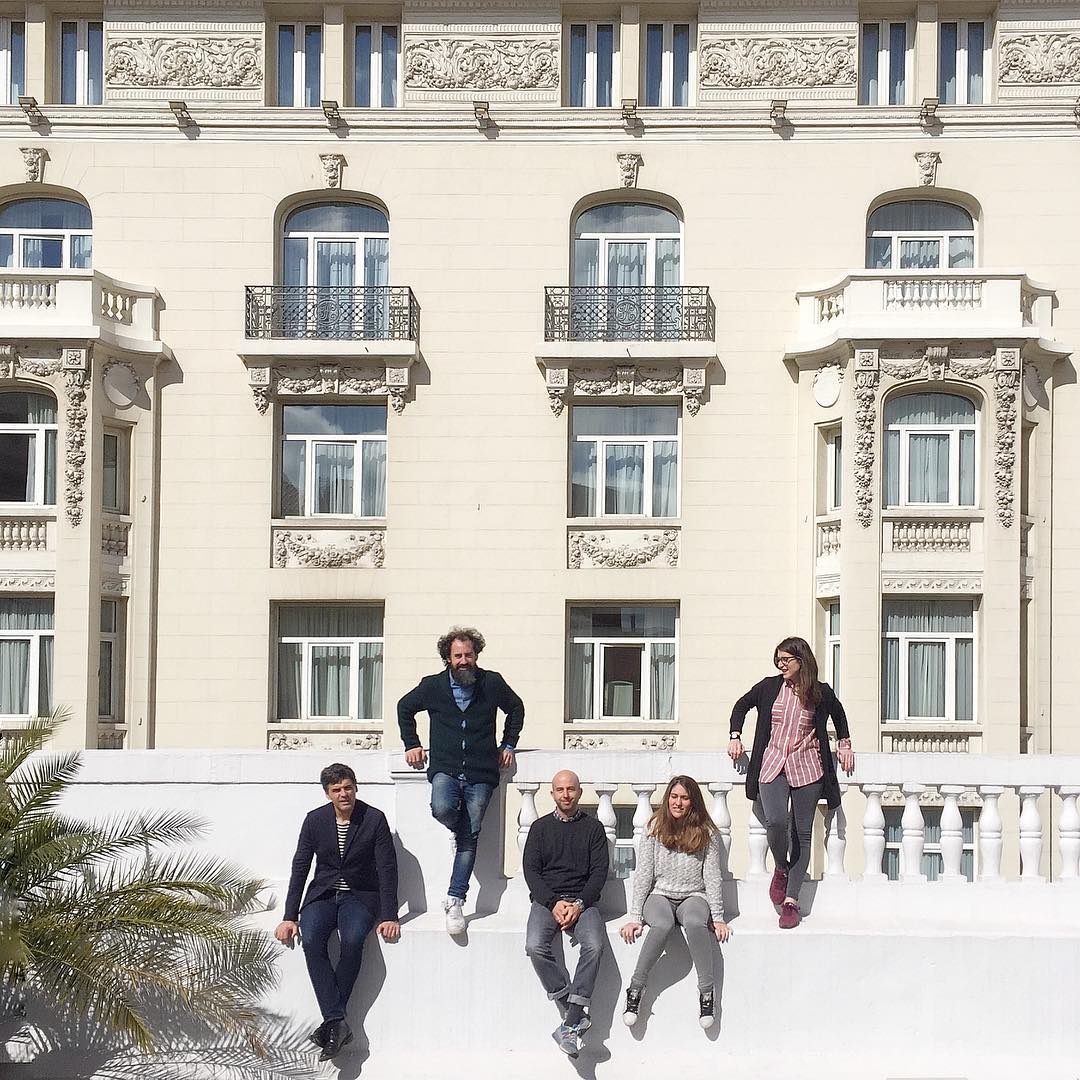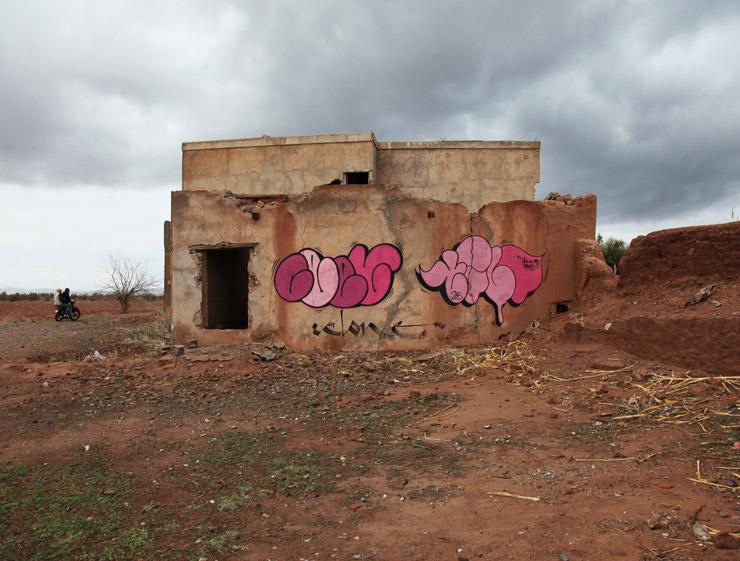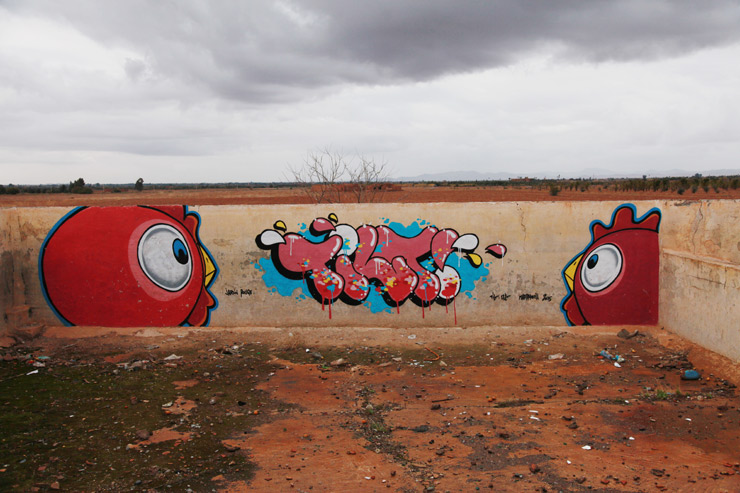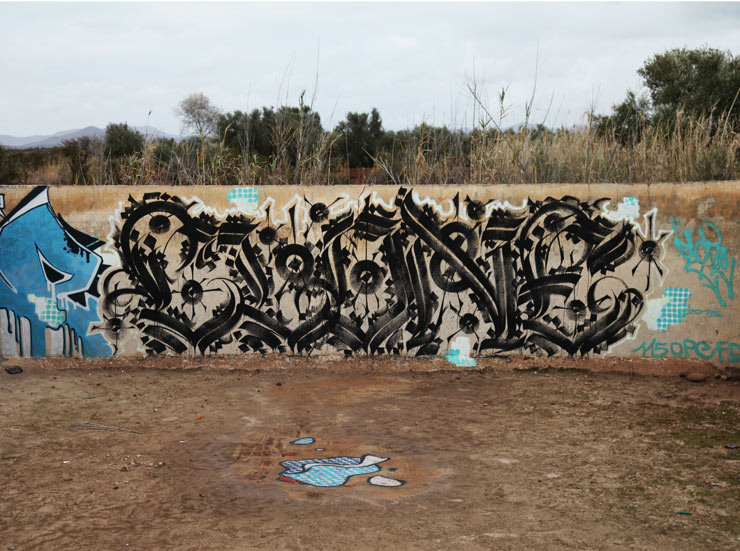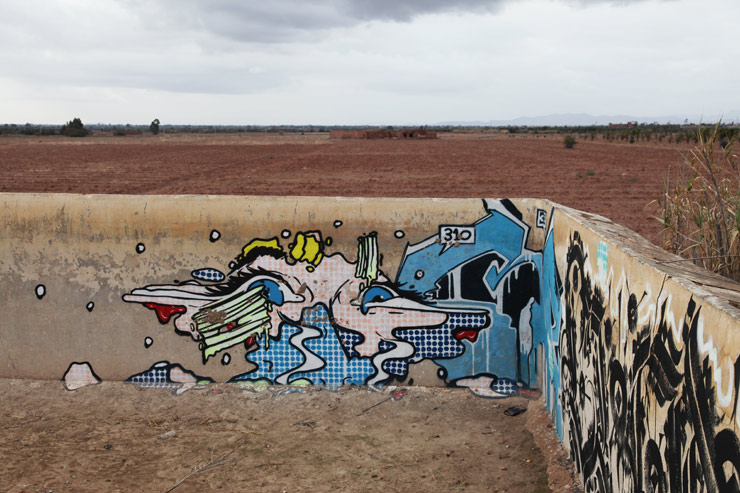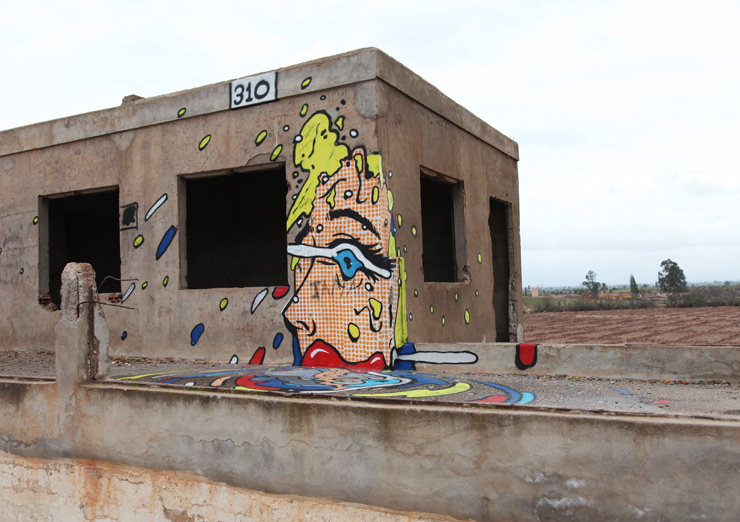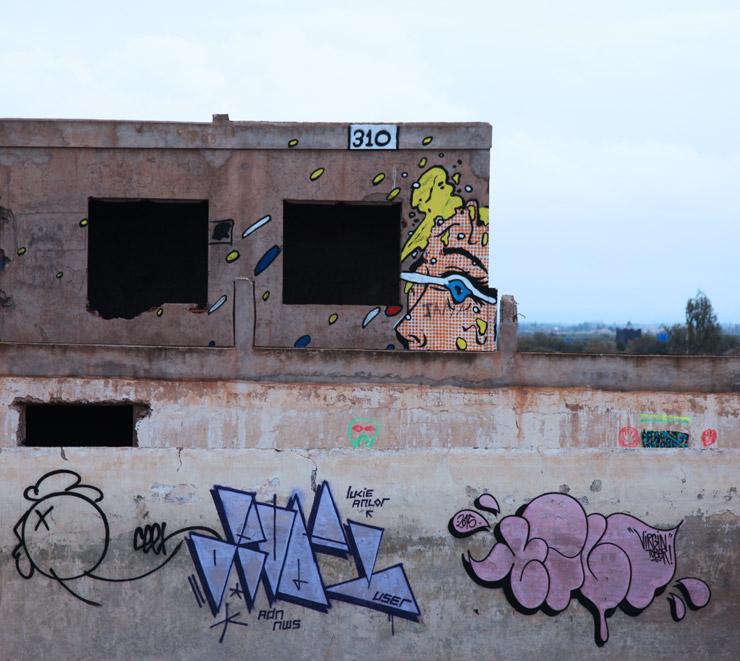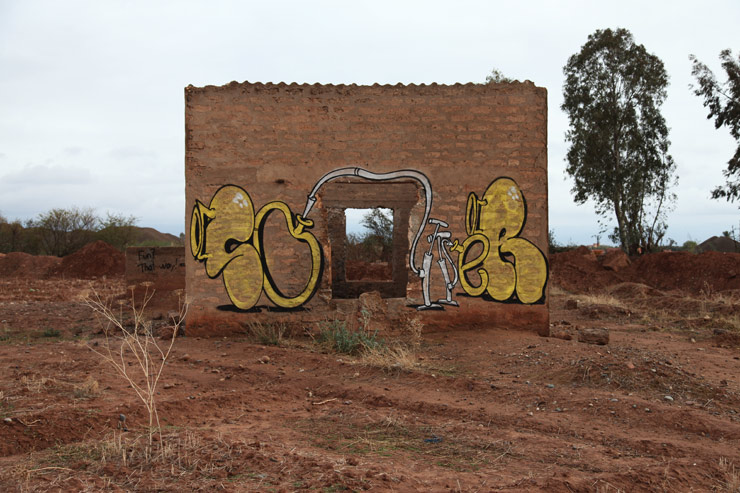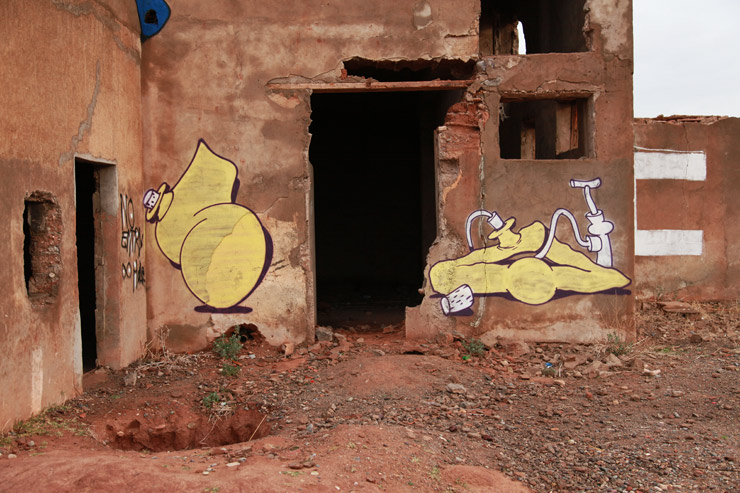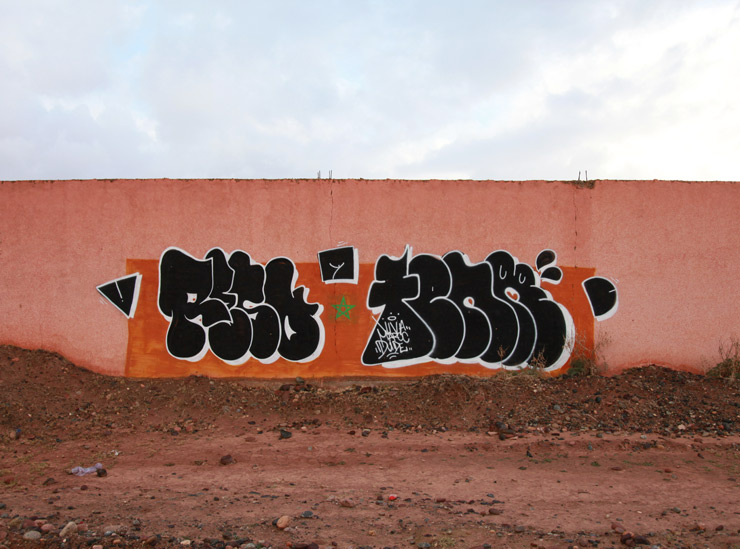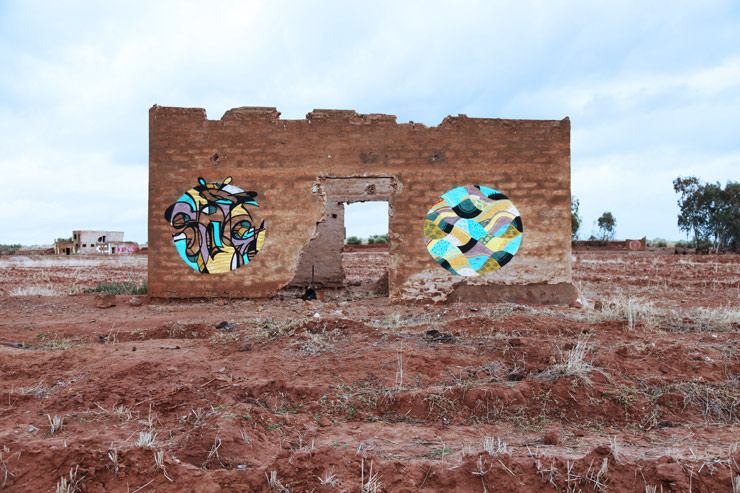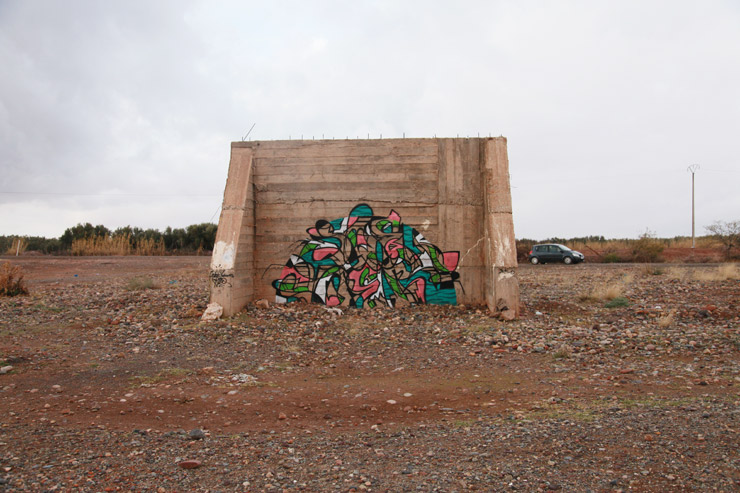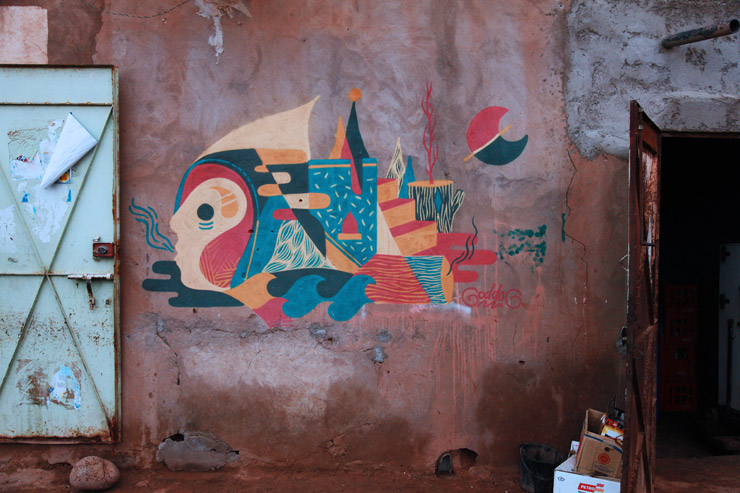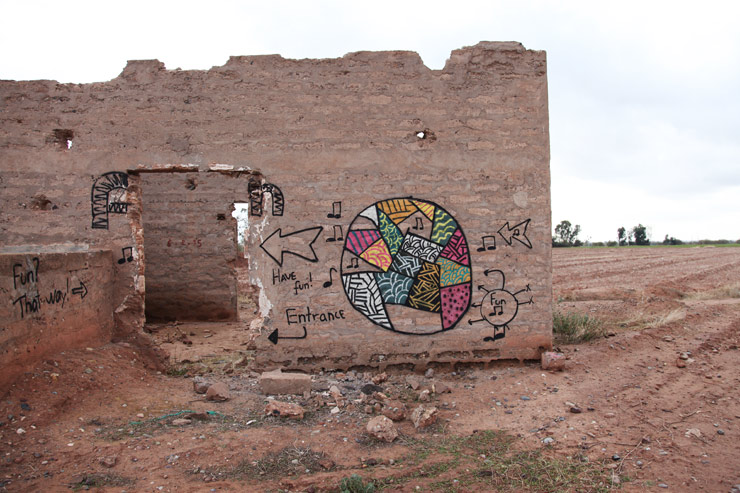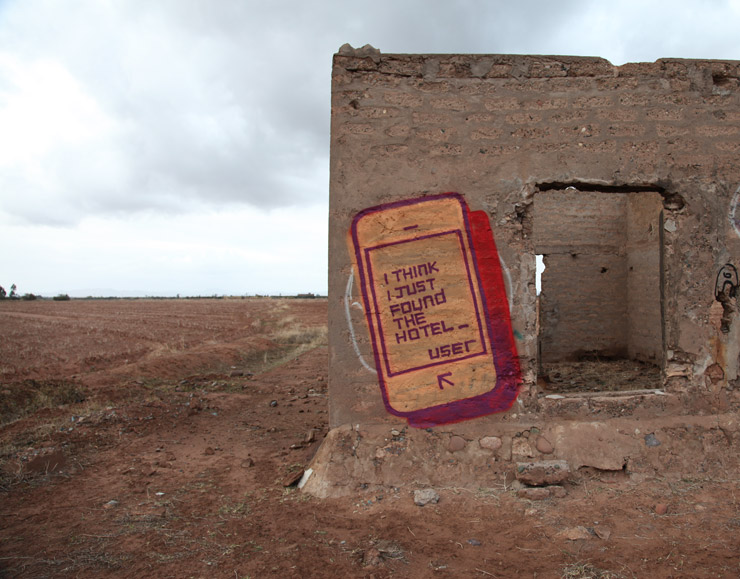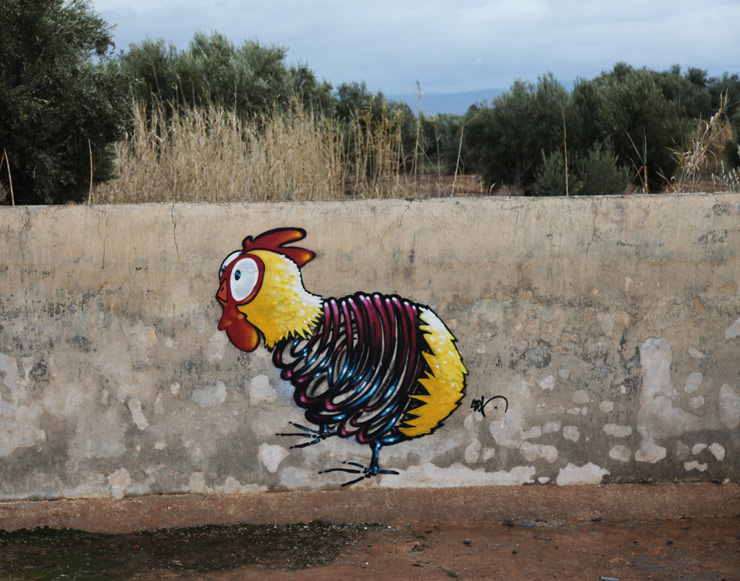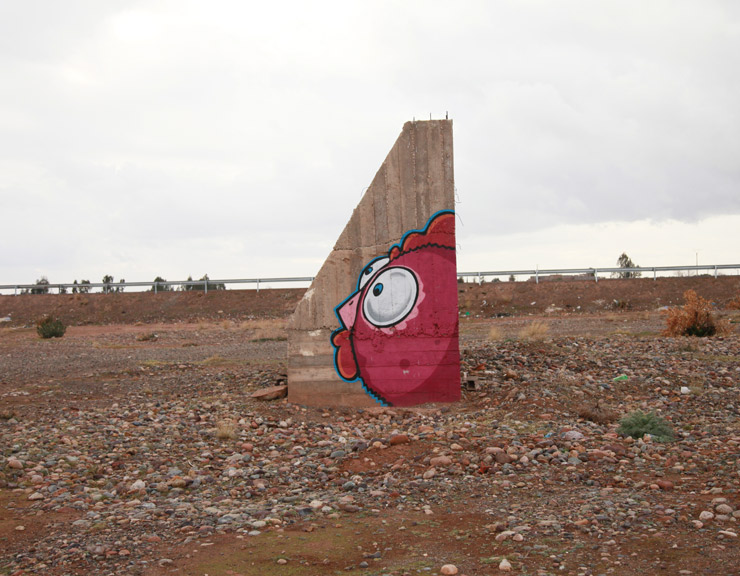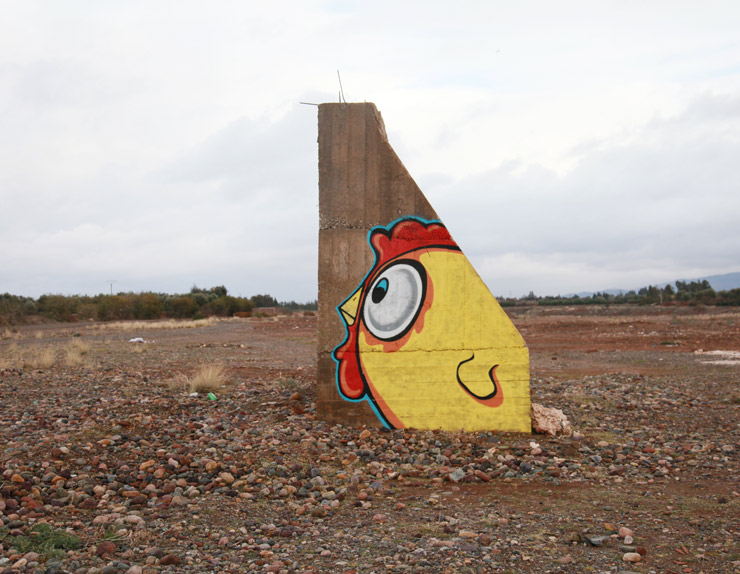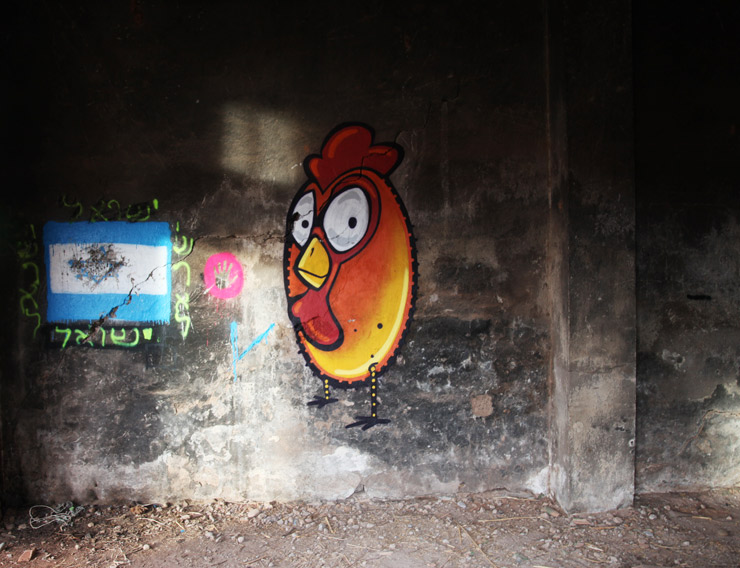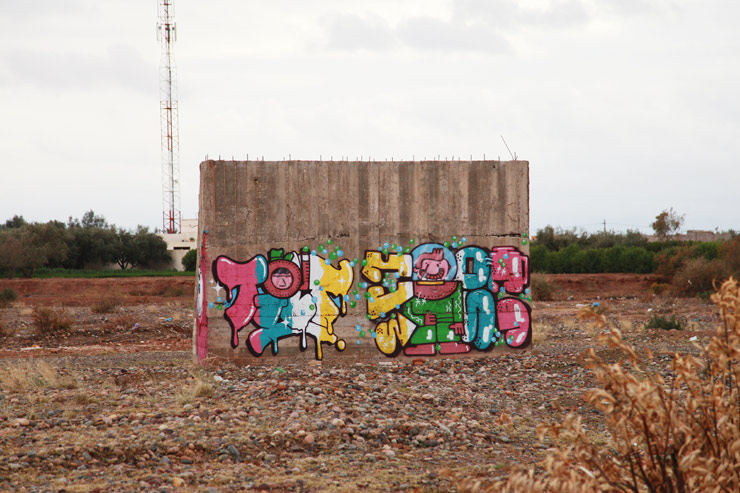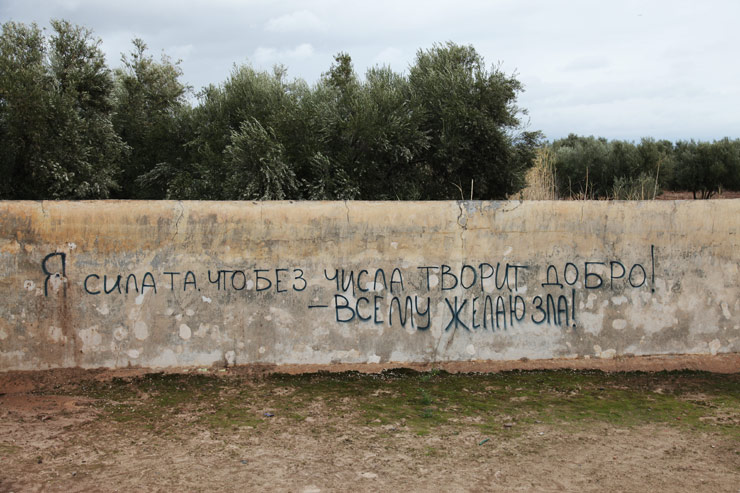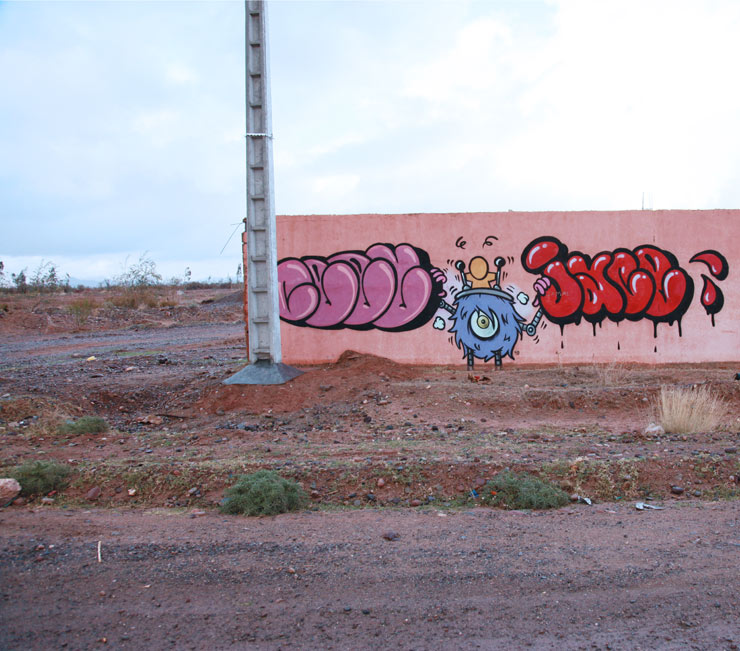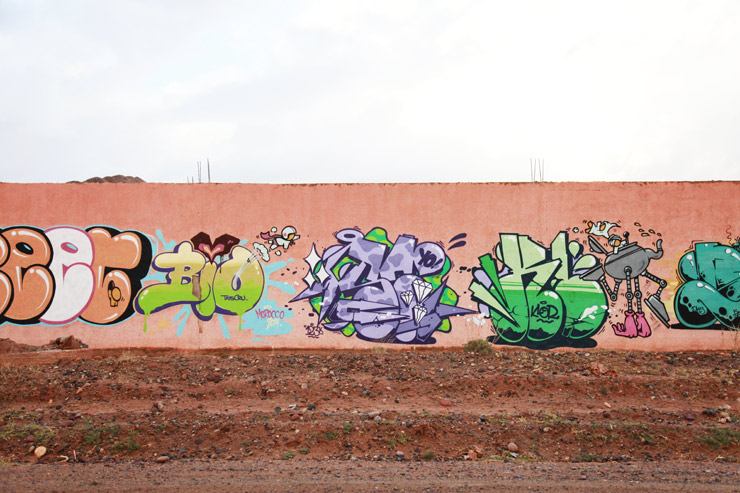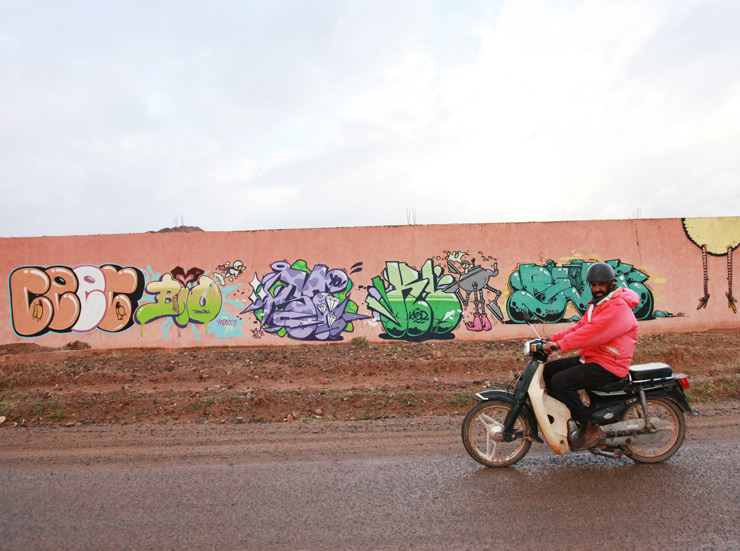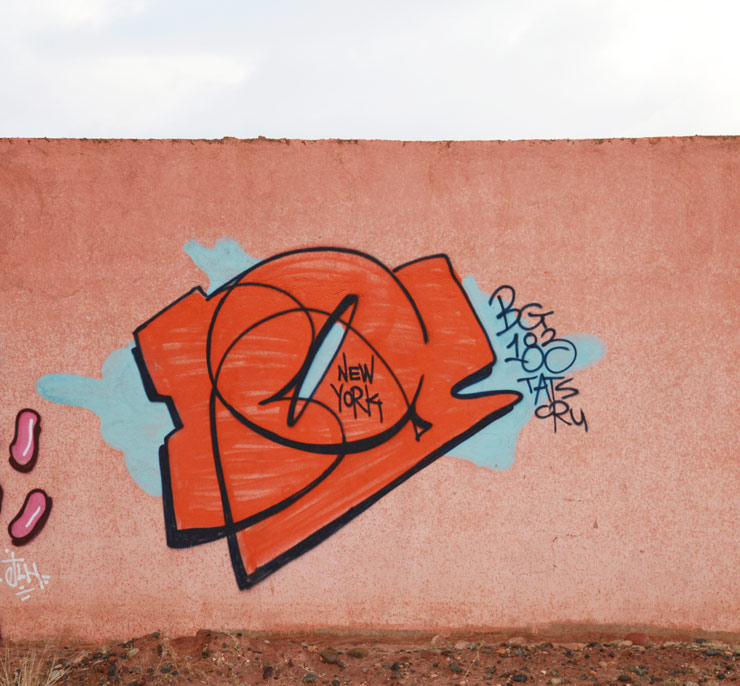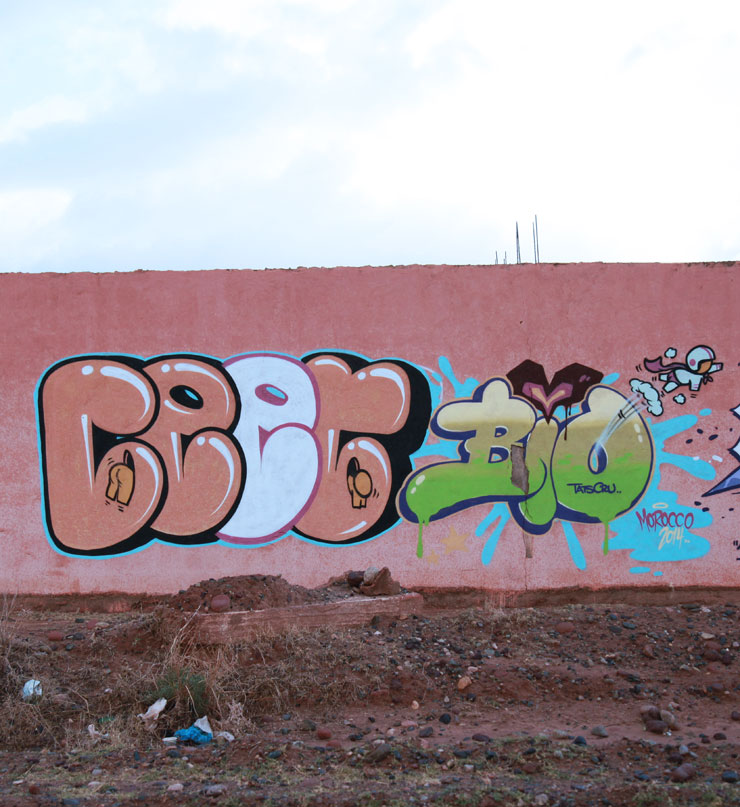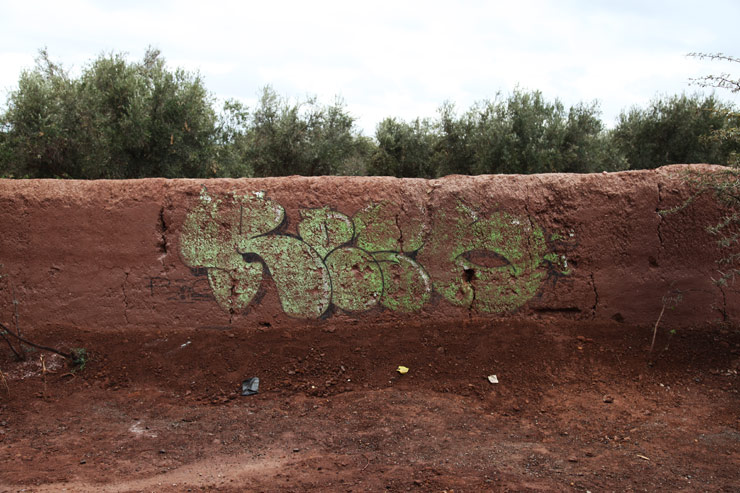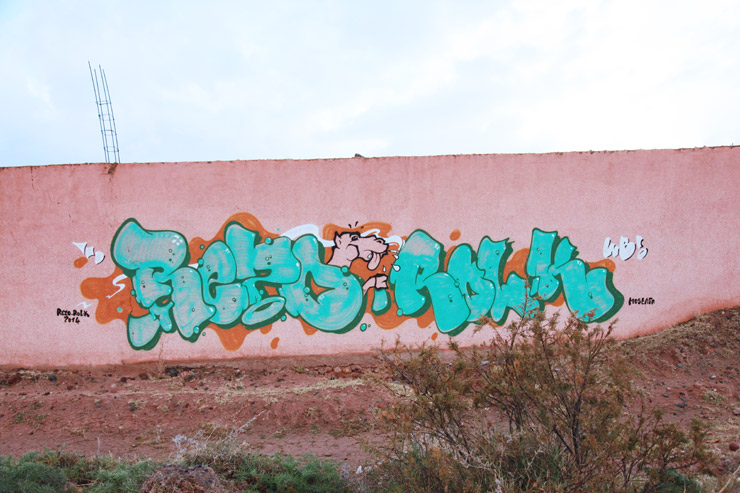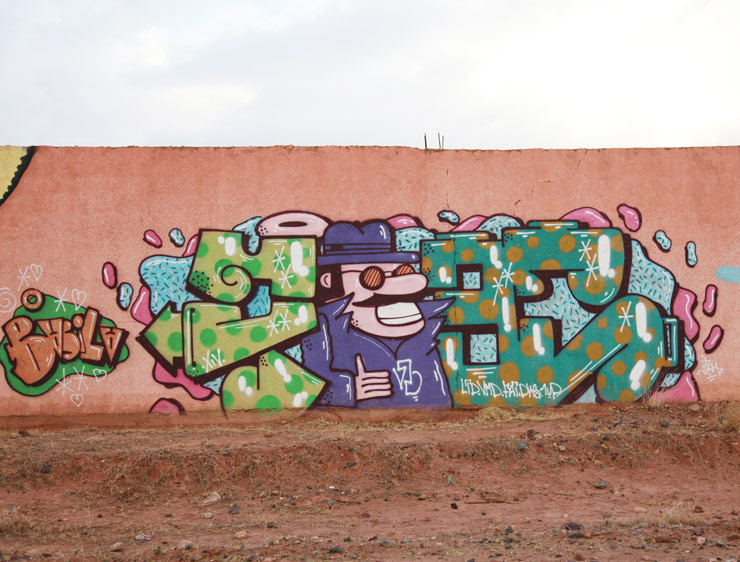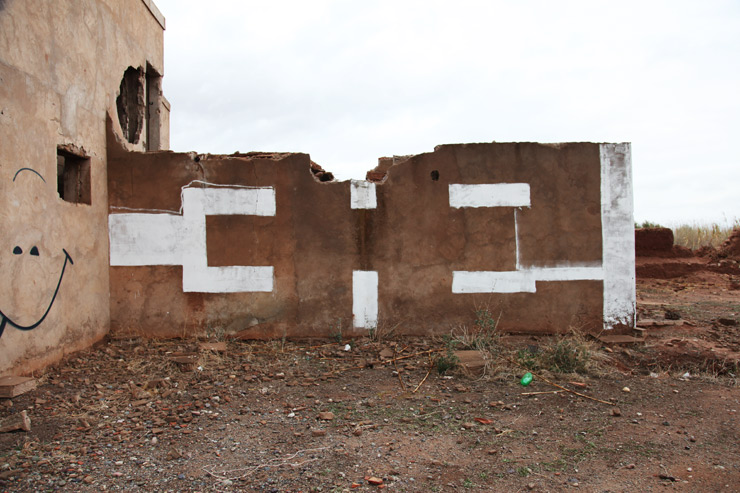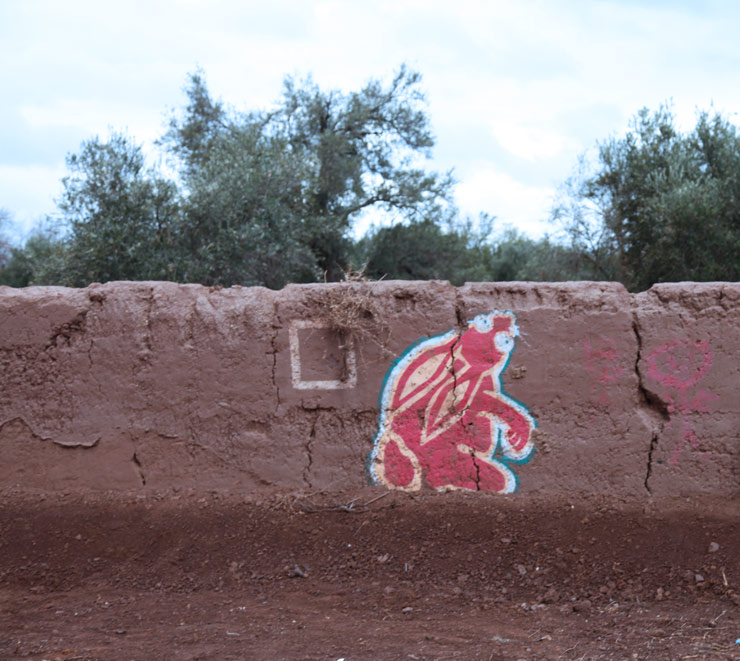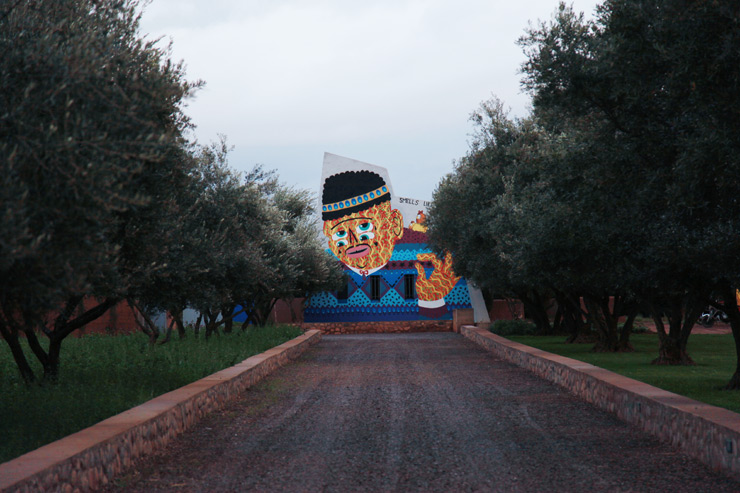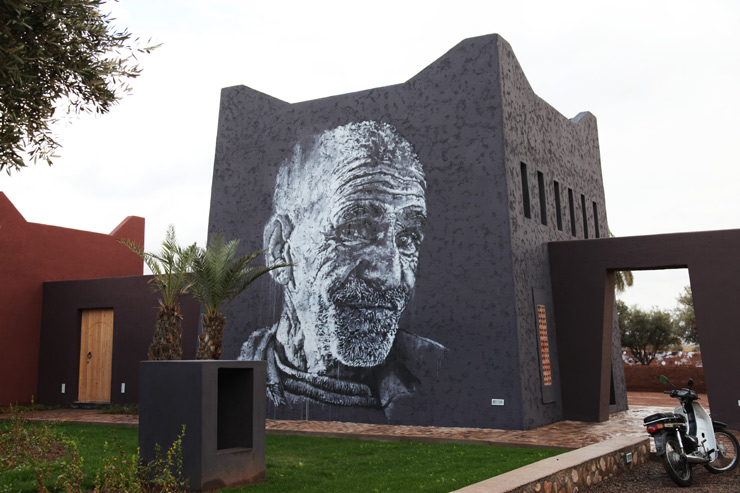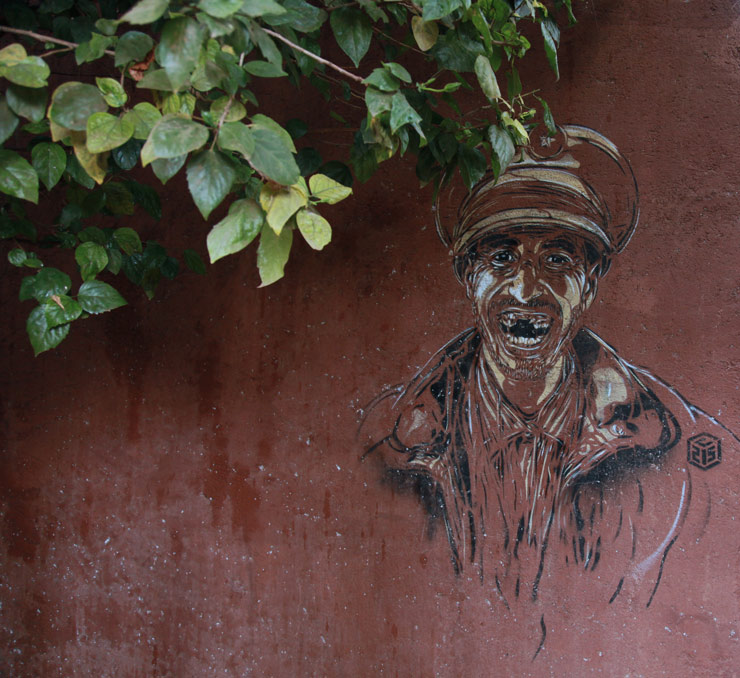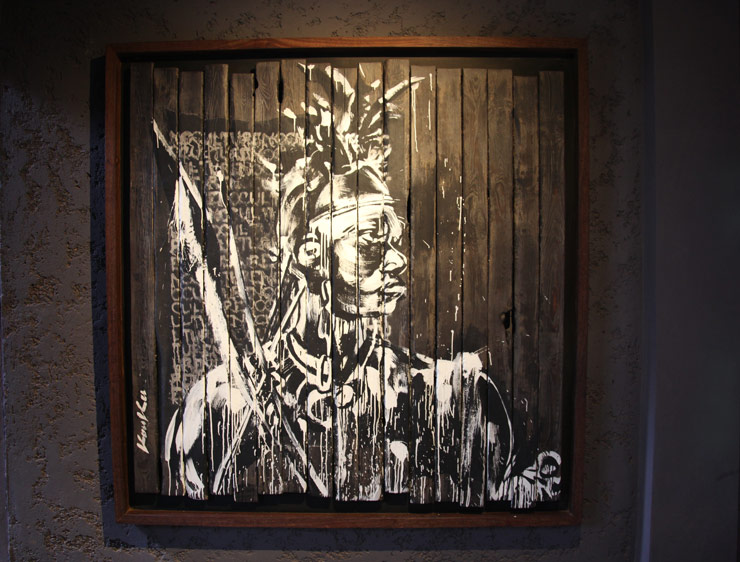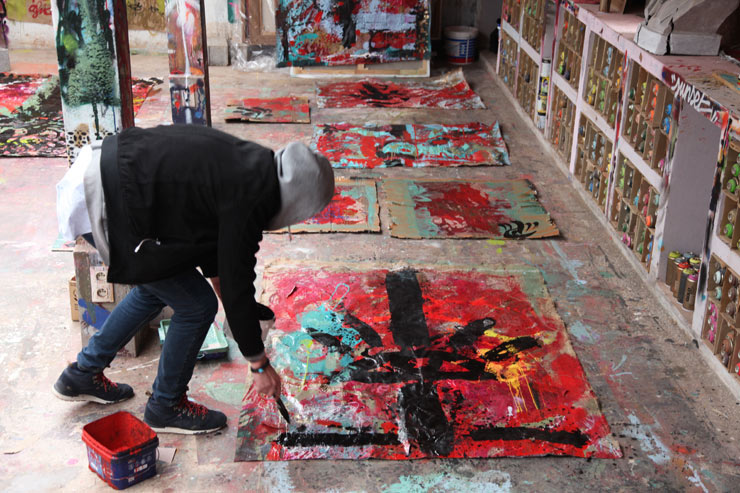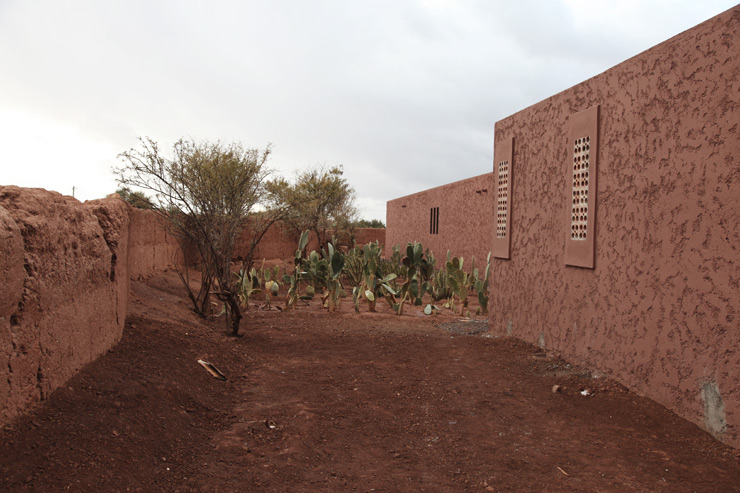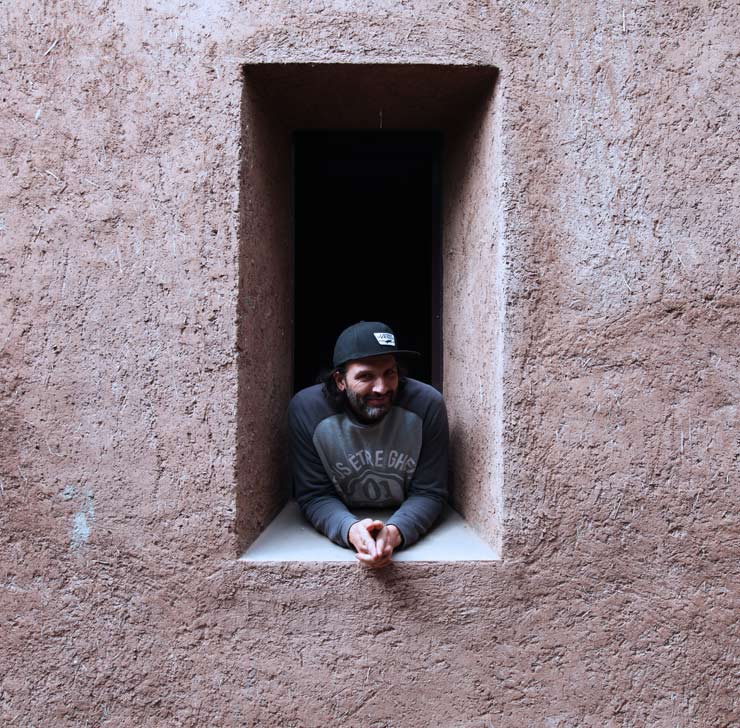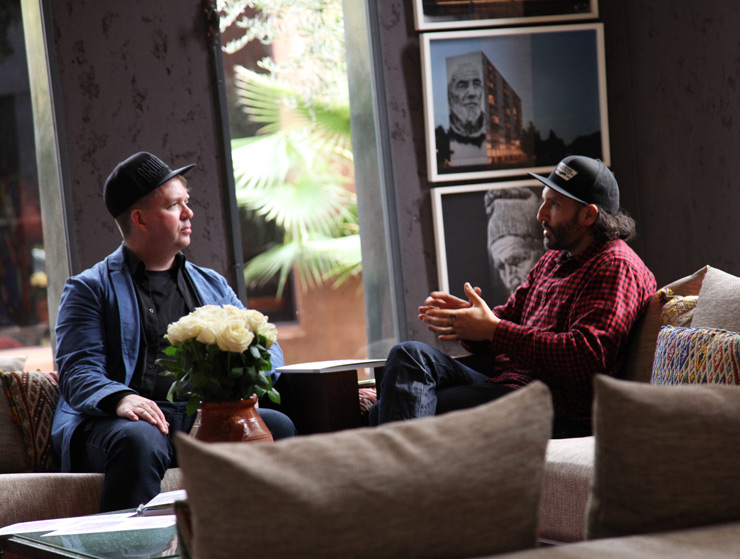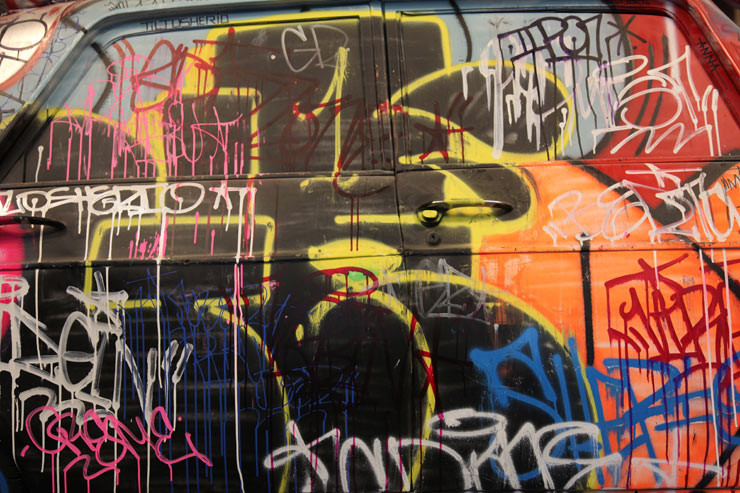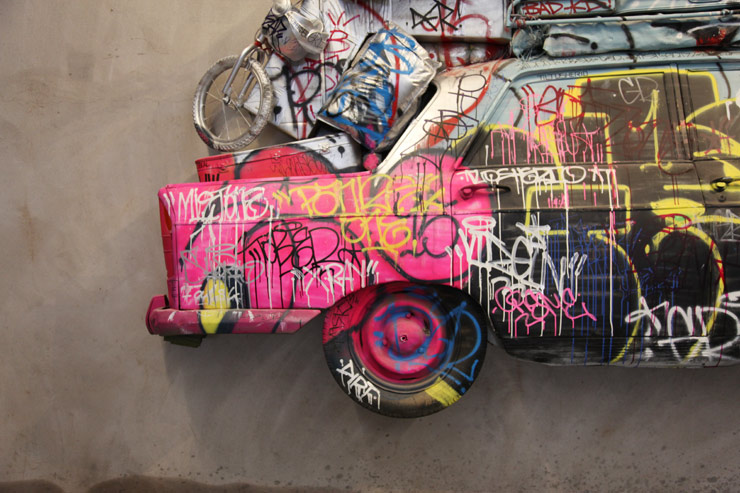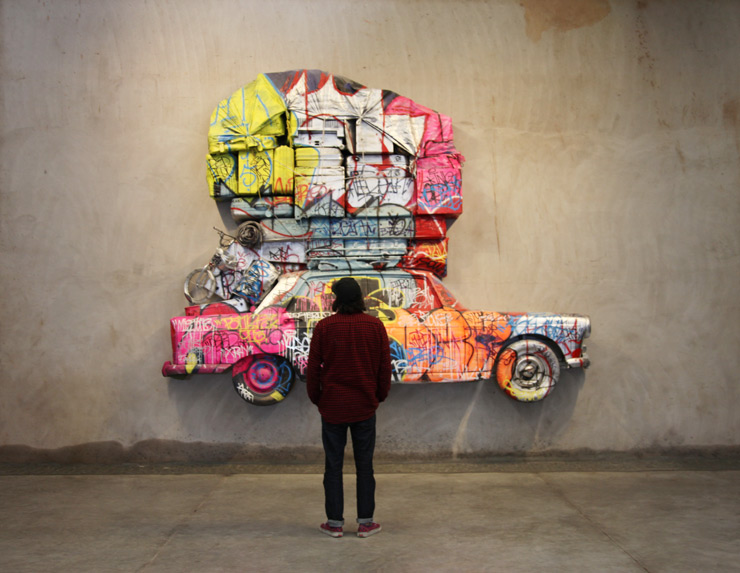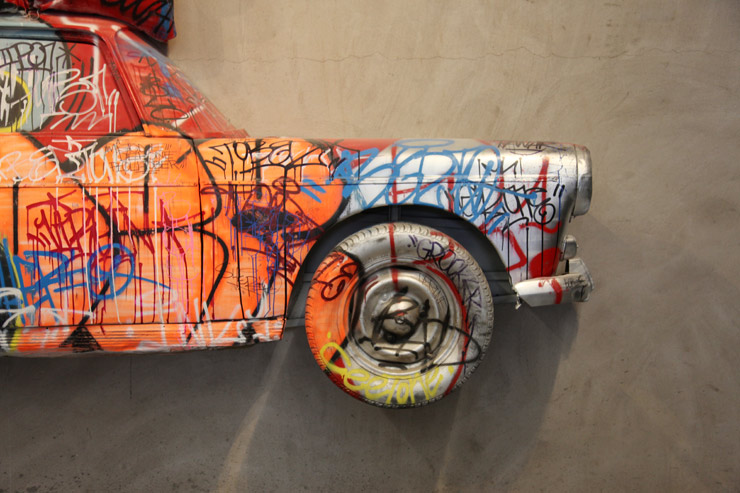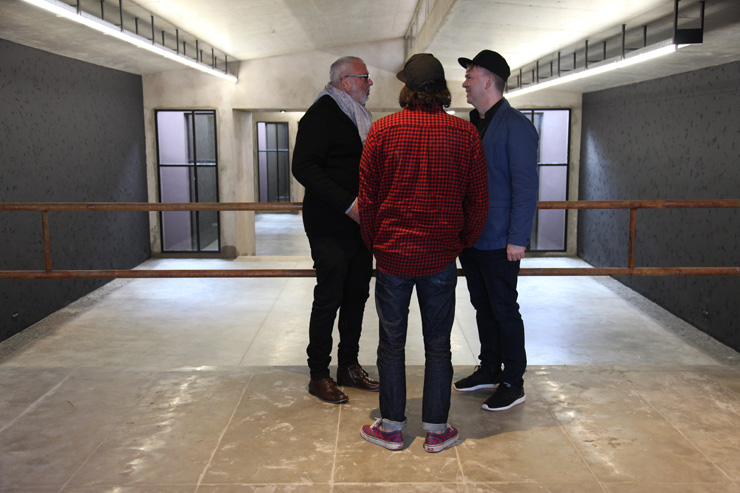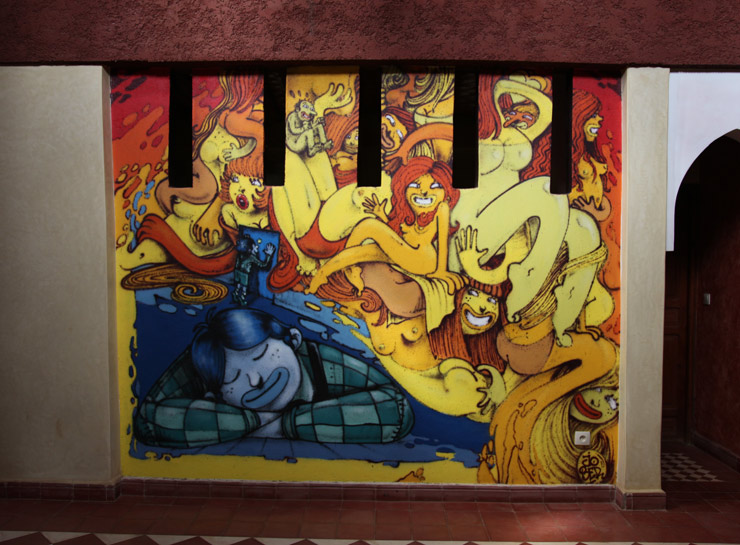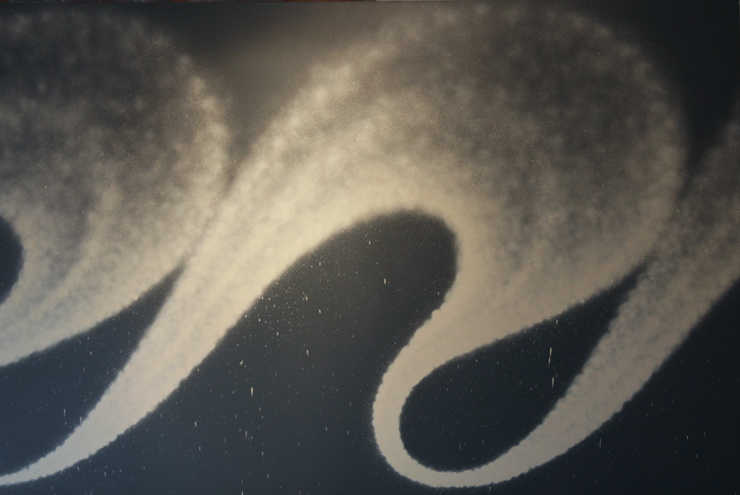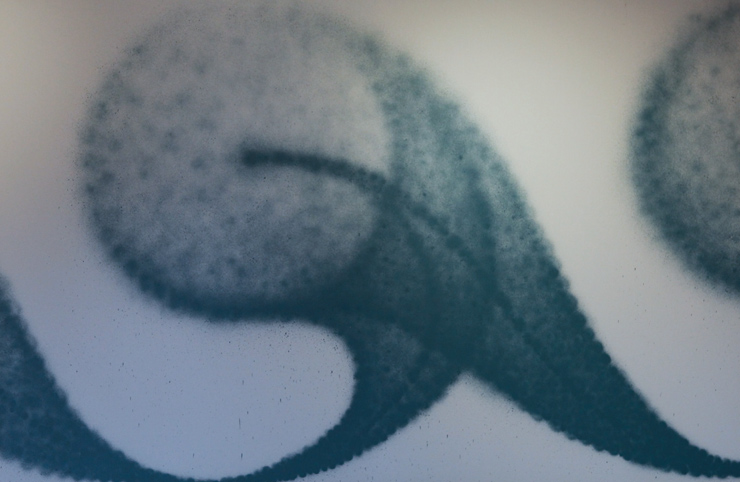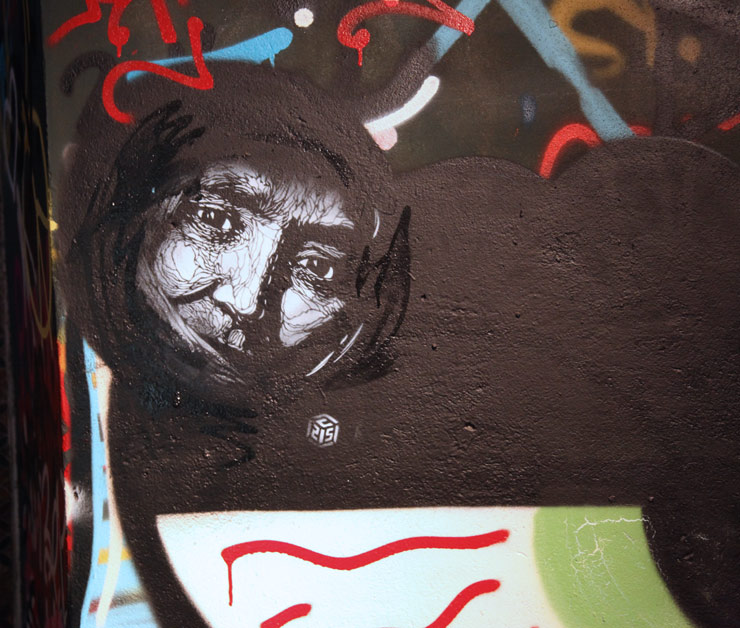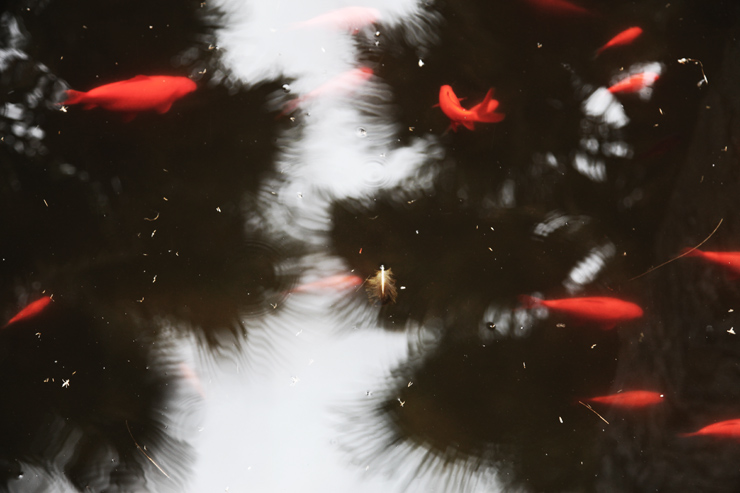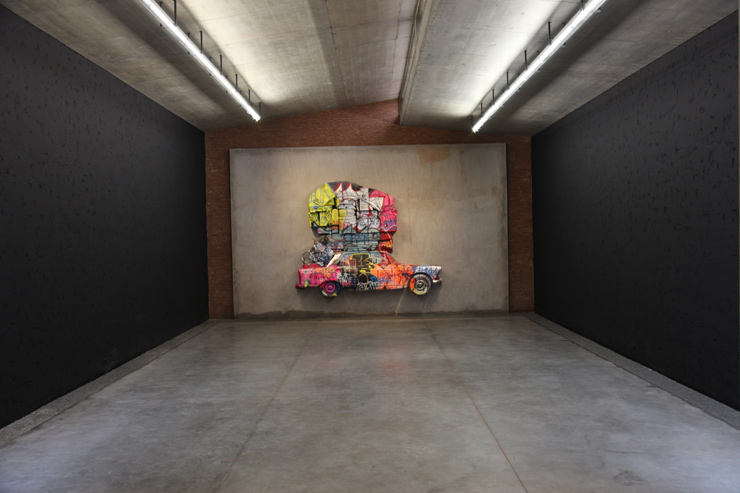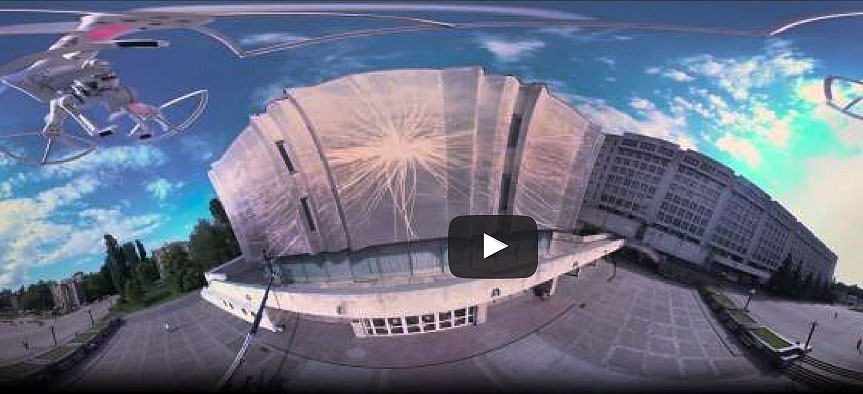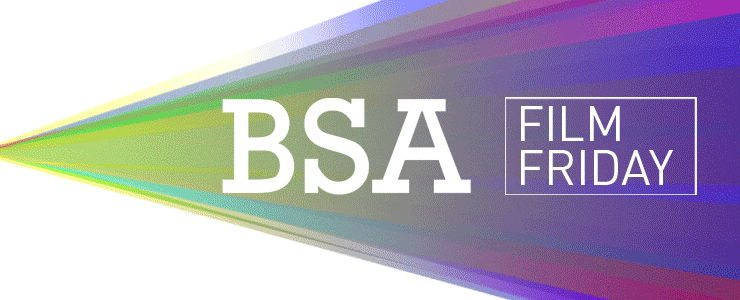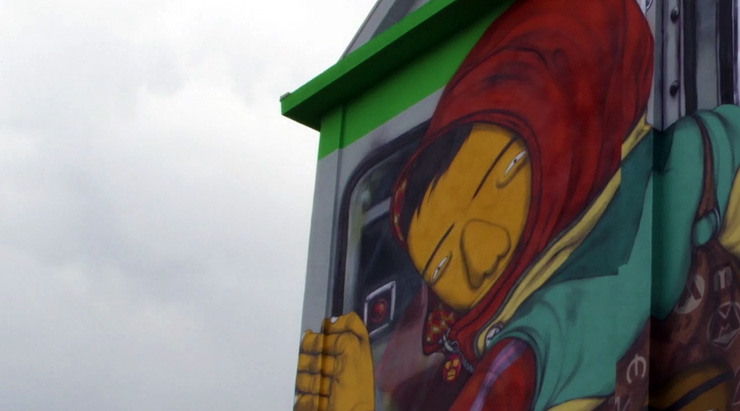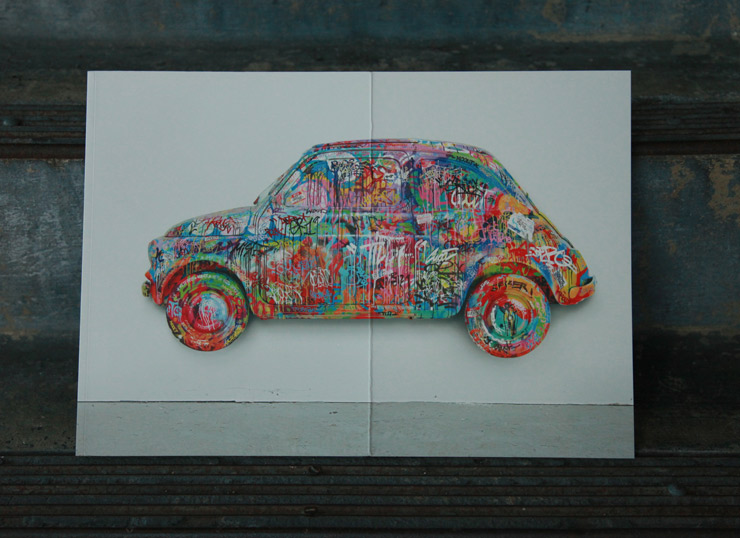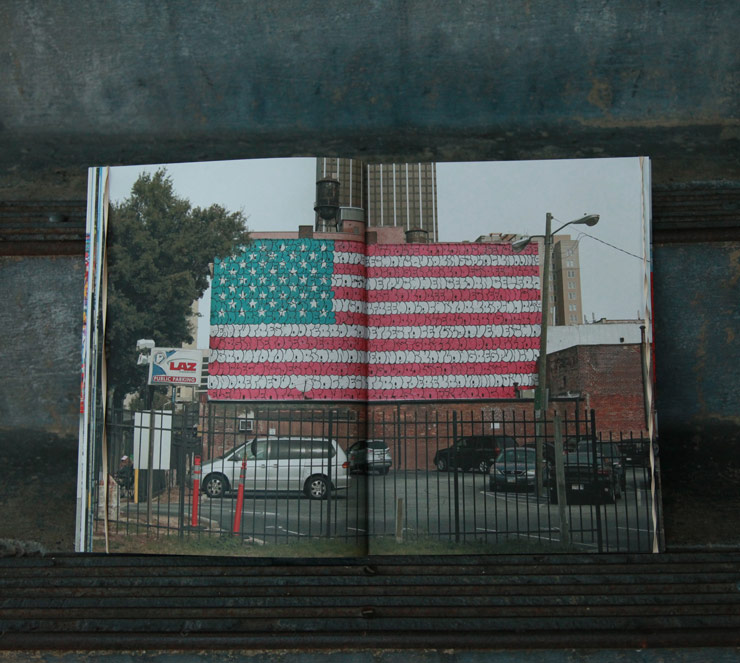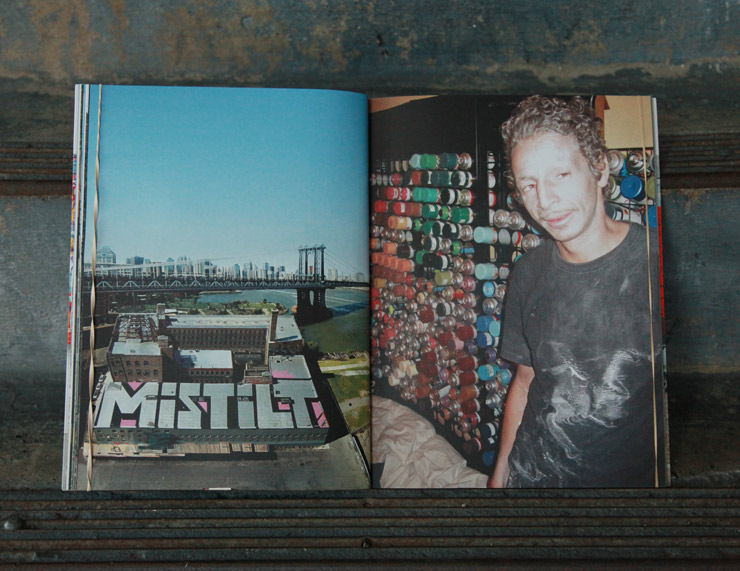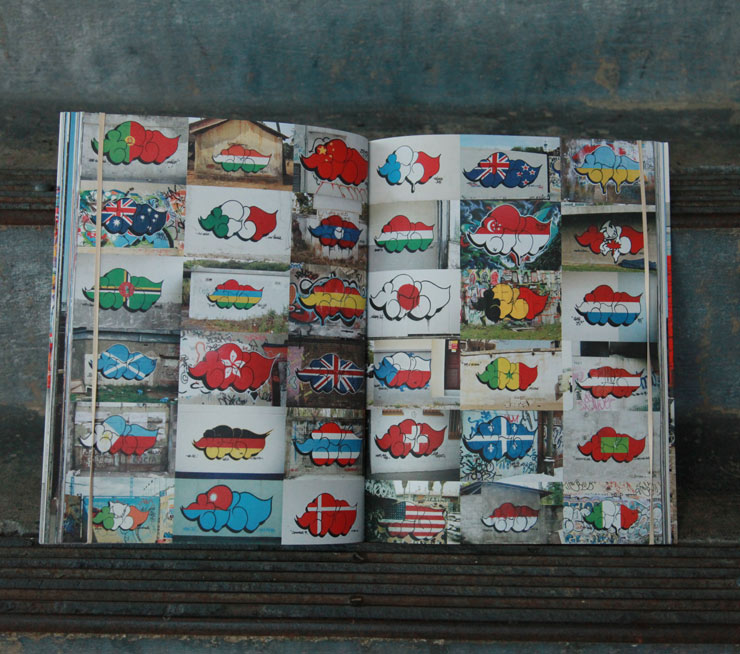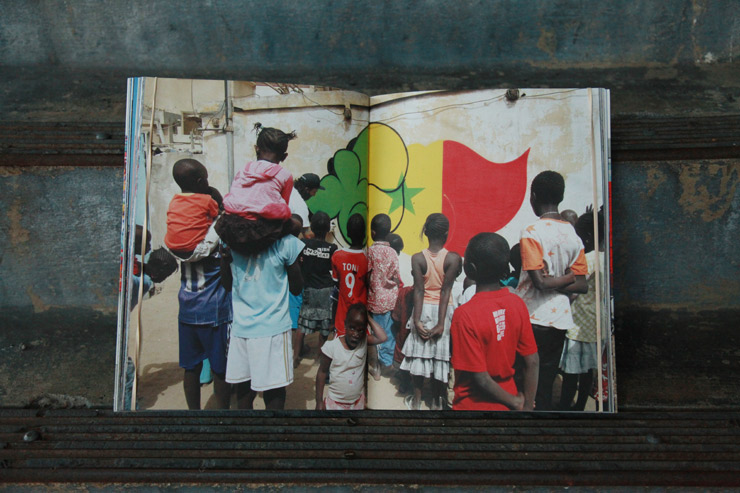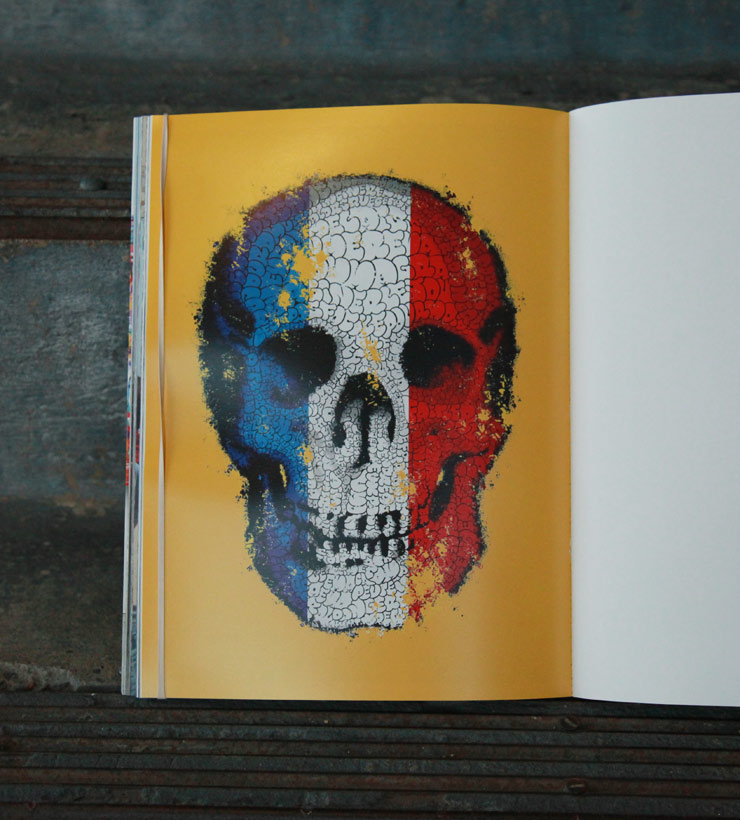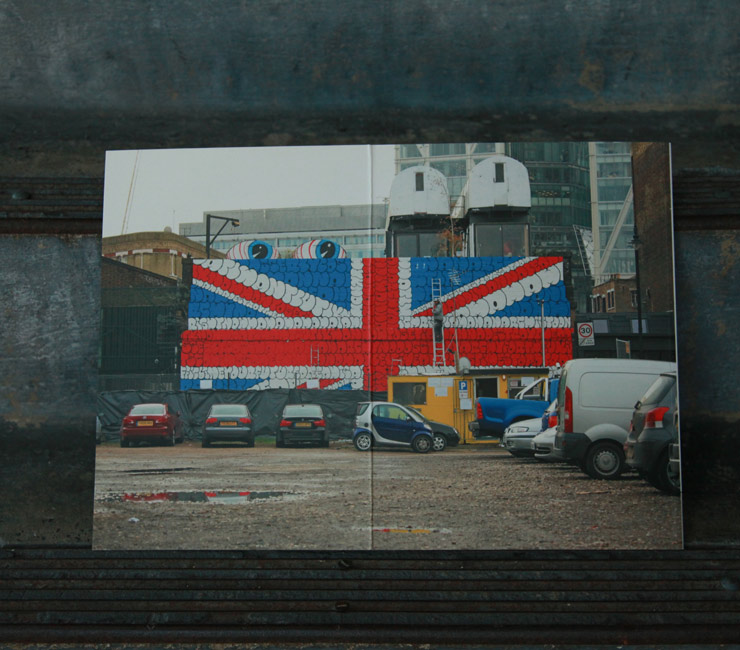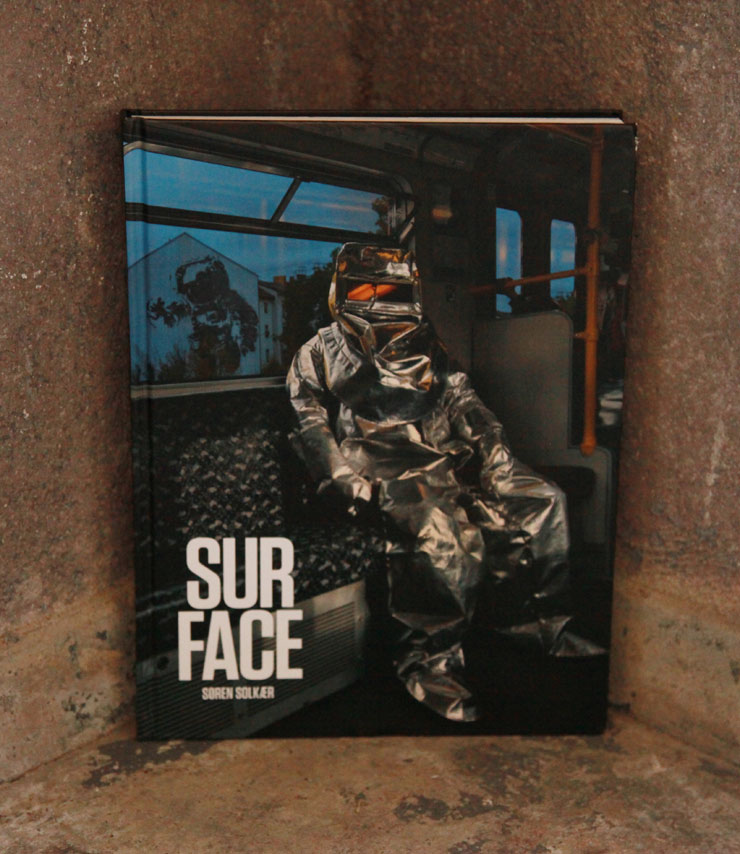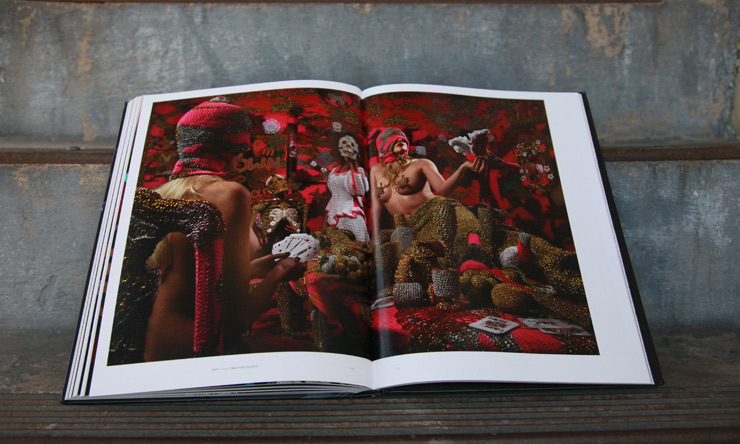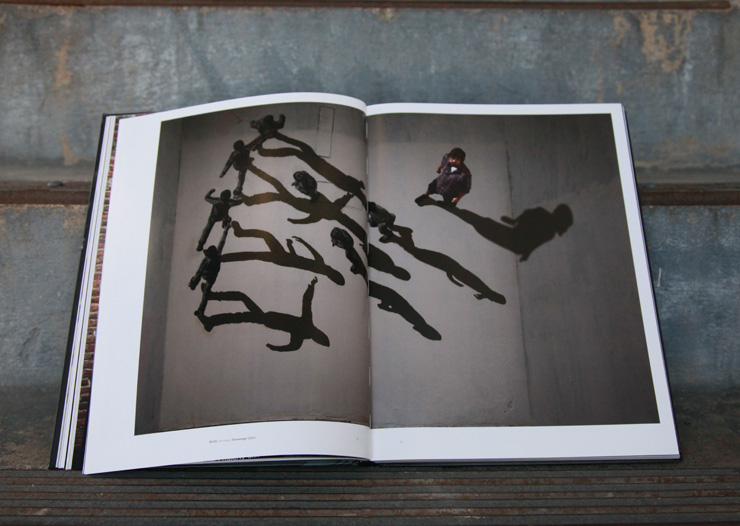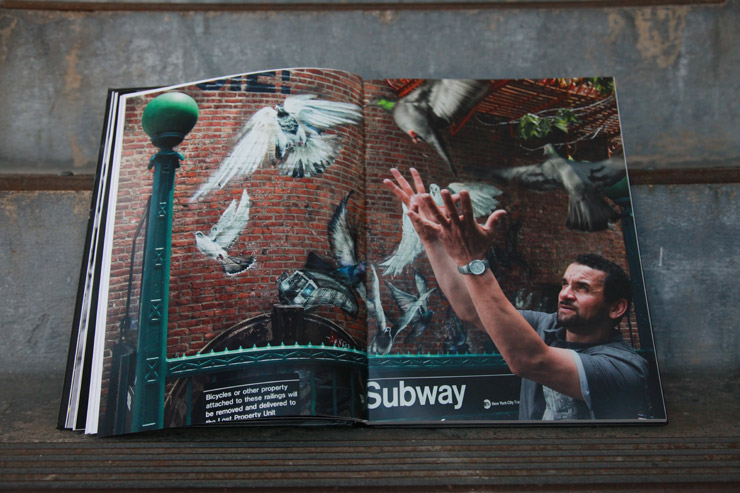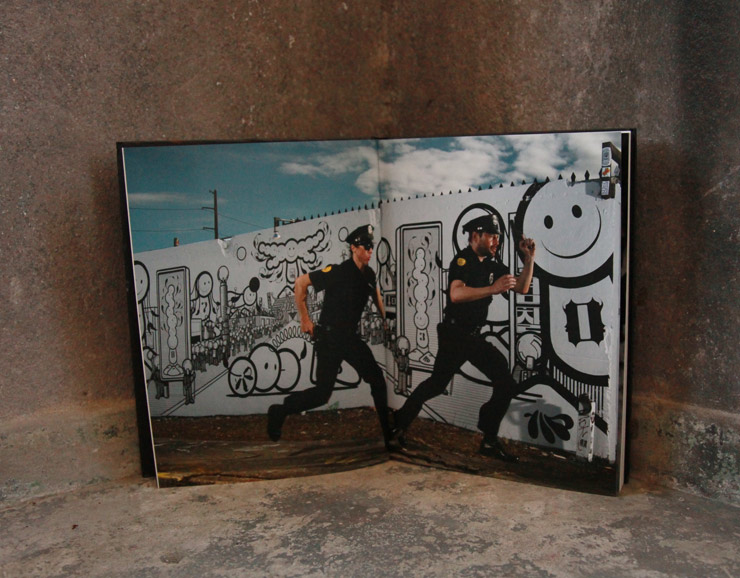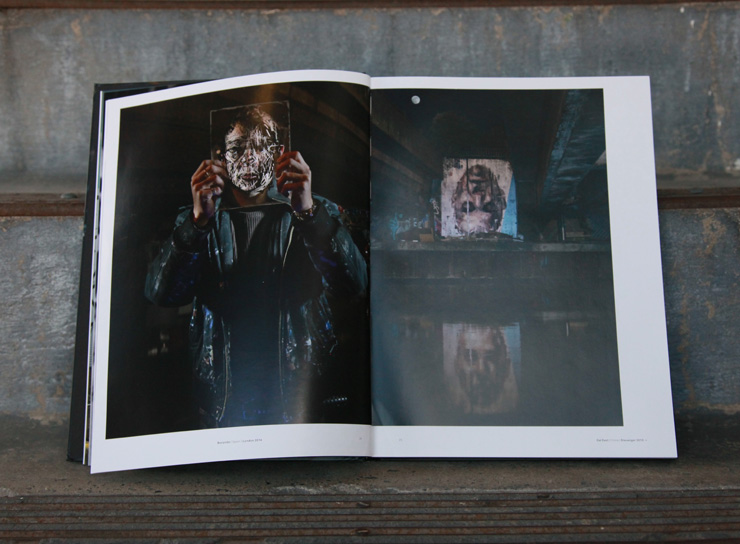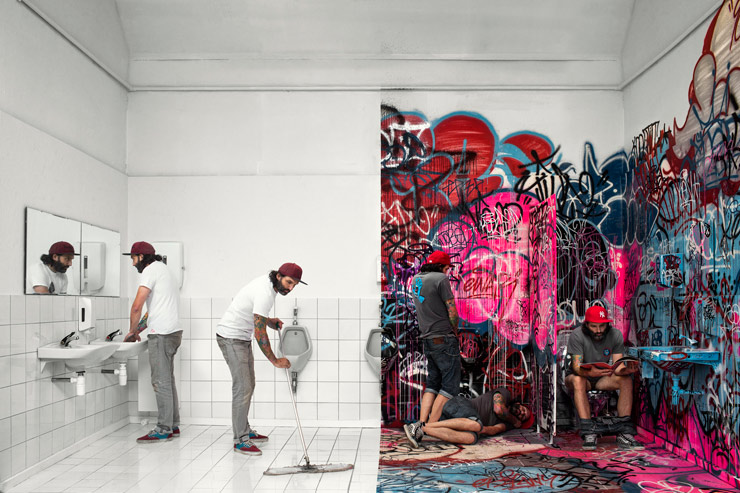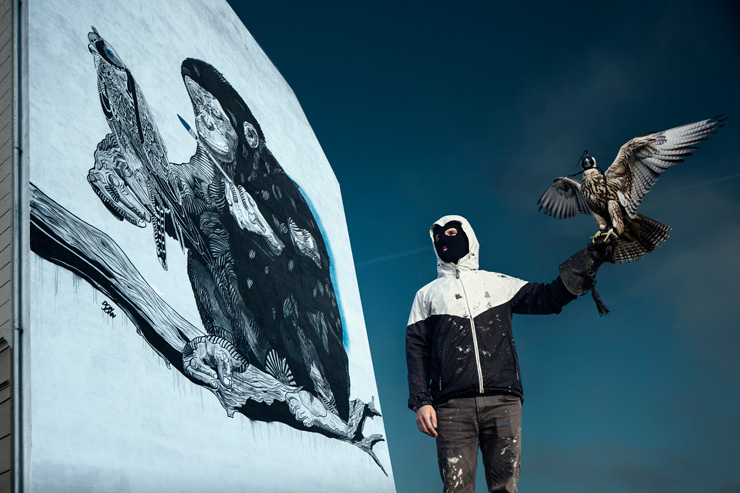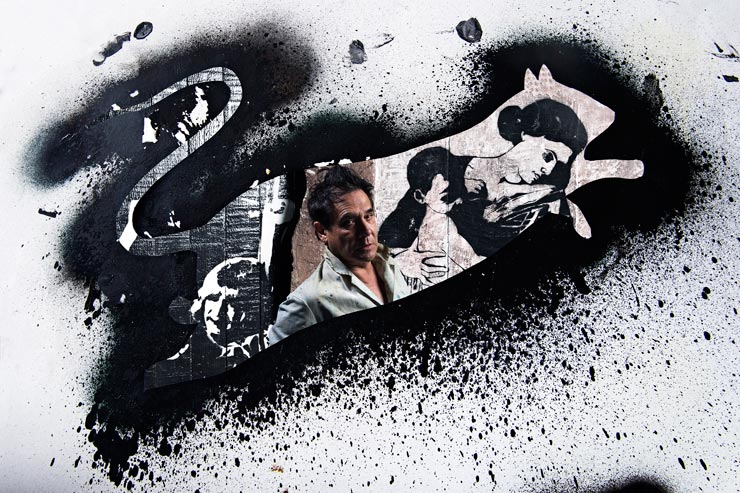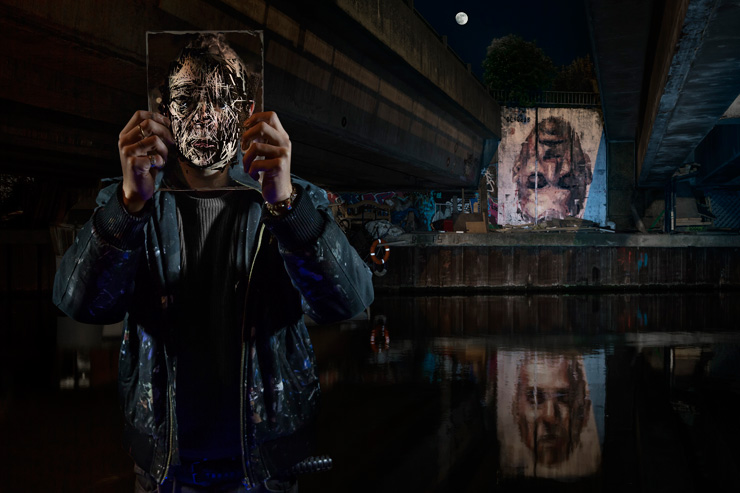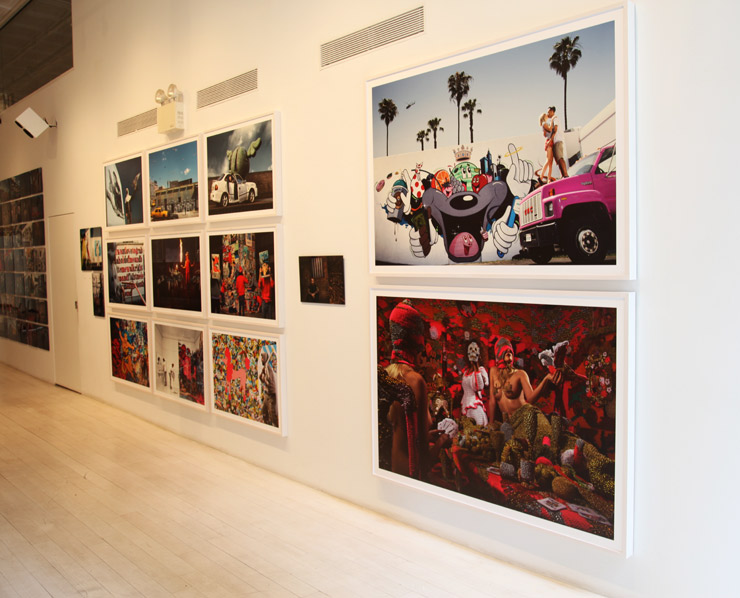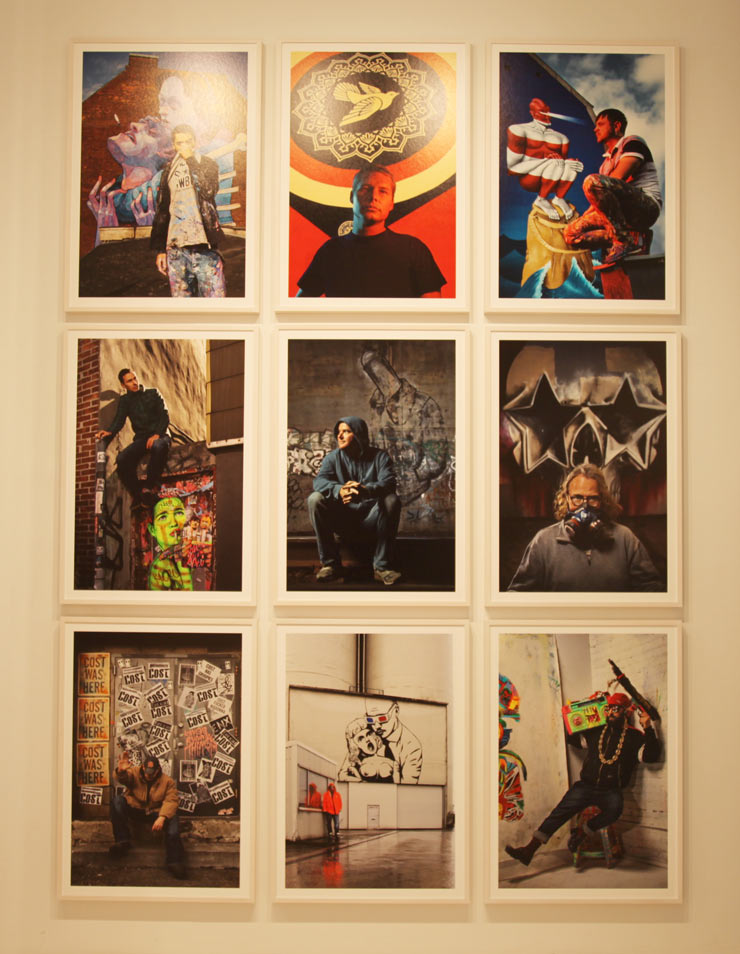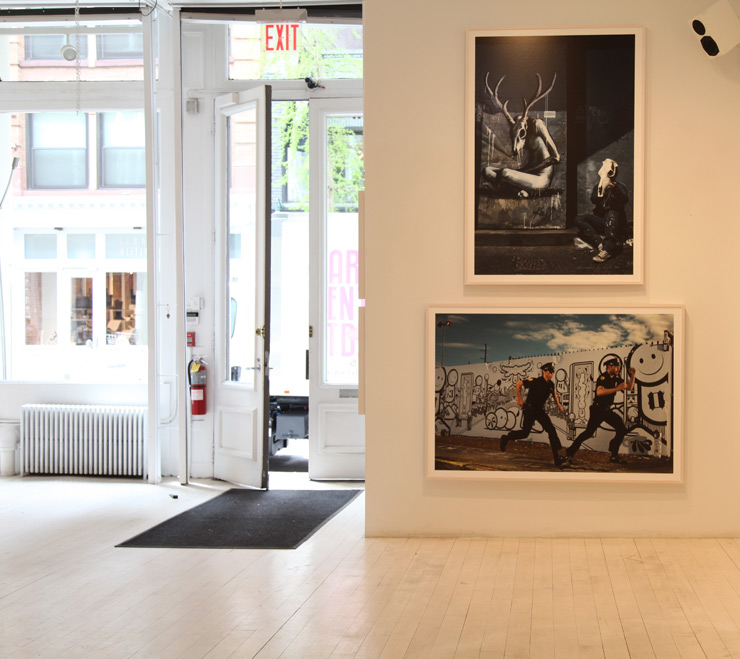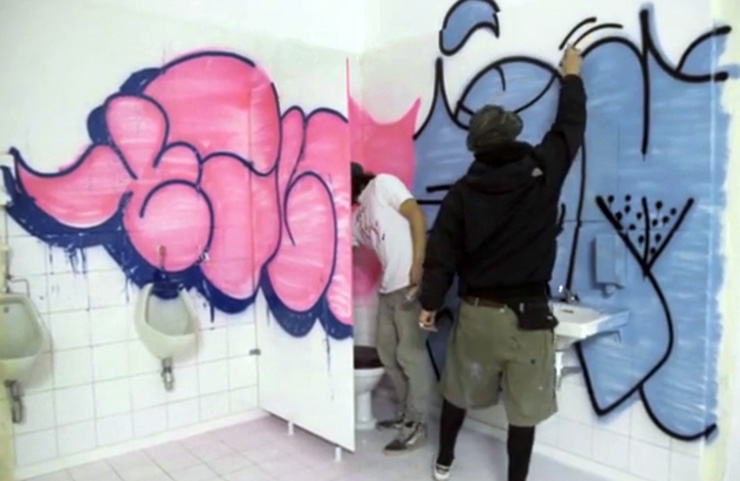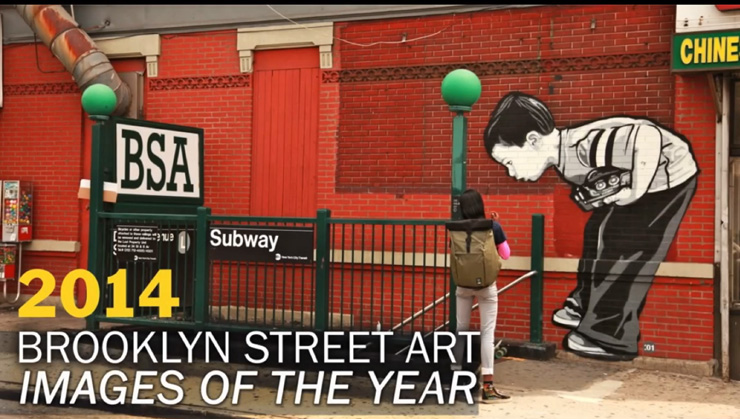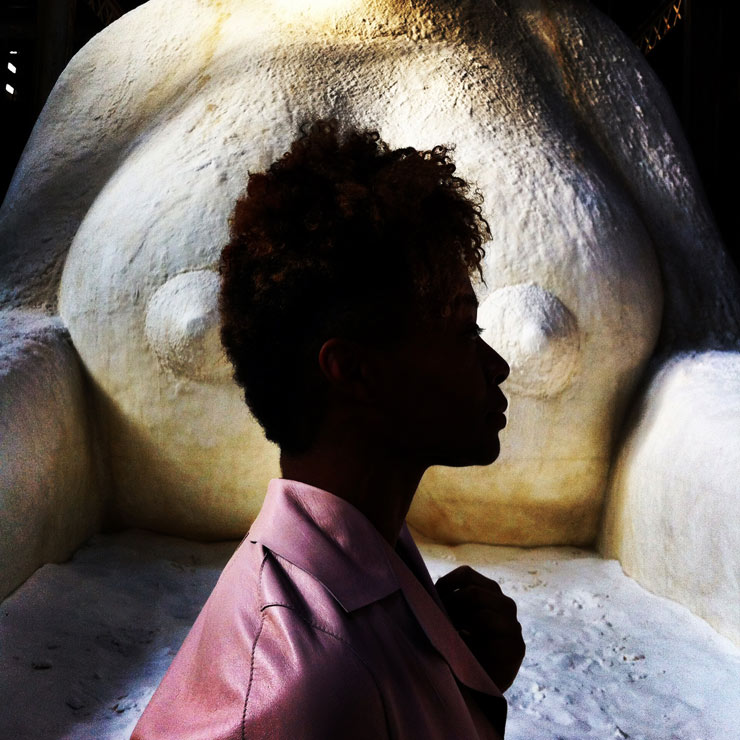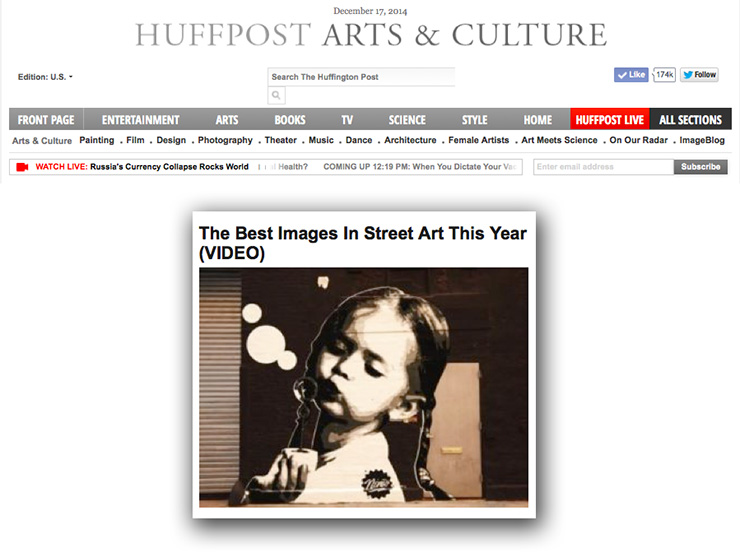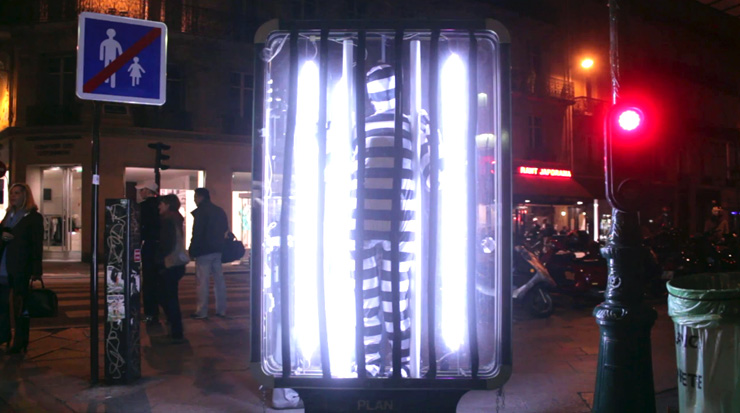It’s good to be asked to write an essay once in a while as it makes us take a step back and more fully examine a topic and appreciate it. On the occasion of Nuart’s 15th anniversary and it’s accompanying print publication last week Martyn Reed asked us to look at the street art / urban art / graffiti scene and to give an analysis about how it has changed in the time that the festival has been running. The essay is a long one, so grab a cup of joe and we hope you enjoy. Included are a number of images in and around Stavanger from Jaime Rojo, not all of them part of the festival, including legal and illegal work.
Technology, Festivals, and Murals as Nuart Turns 15
Steven P. Harrington and Jaime Rojo
Nuart is turning 15 this year and like most brilliant teenagers it is alternately asking you challenging questions, finding you somewhat uncool, or is on your tablet ordering a new skateboard with your credit card. Nuart started with mainly music and is now mainly murals; an internationally well-regarded venue for thoughtfully curated urban art programs and erudite academic examination – with an undercurrent of troublemaking at all times. Today Nuart can be relied upon to initiate new conversations that you weren’t expecting and set a standard for thoughtful analysis of Street Art and its discontents.
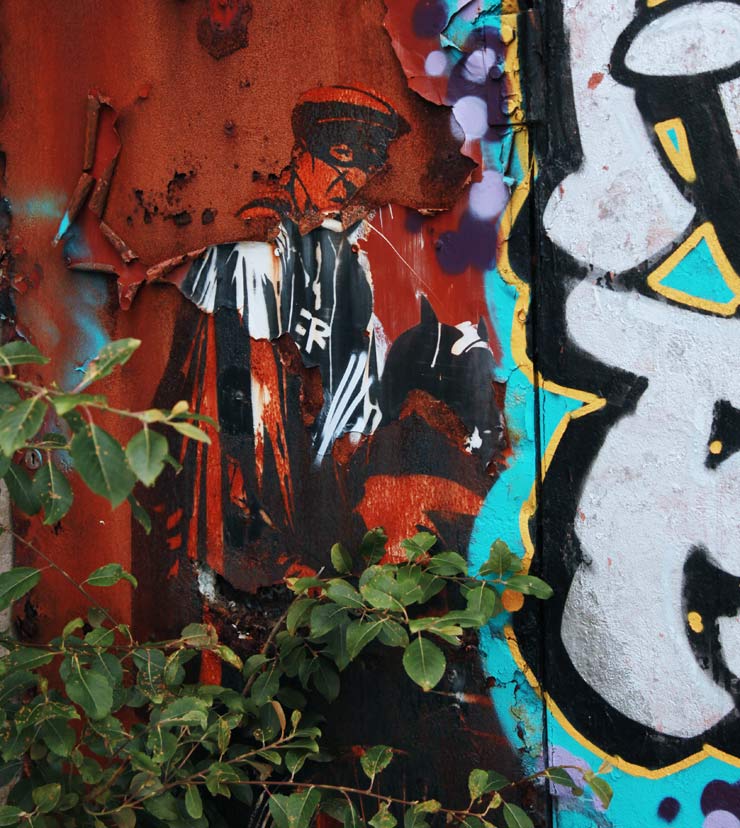
Pøbel (photo © Jaime Rojo)
We are in the thick of it, as it were, this great expansion of a first global grassroots people’s art movement. Give it any title you like, the flood of art in the streets that knocks on BSA’s door daily is unabated. We admit that we often get caught up in the moment and forget to study our forebears, Street Art’s progenitors and contributors – and that we sometimes are unable to appreciate the significance of this incredible time. So we are happy when the Nuart team asked us to take a long view of the last fifteen years and to tell them what we see.
As we mark Nuart’s milestone, we see three important developments on the Street Art scene while it evolves: Technology, Festivals, and Murals.
And just before we discuss these three developments in Street Art we emphasize what has stayed the same; our own sense of wonder and thrill at the creative spirit, however it is expressed; we marvel to see how it can seize someone and flow amidst their innermost, take hold of them, convulse through them, rip them apart and occasionally make them whole.
What has changed is that the practice and acceptance of Street Art, the collecting of the work, it’s move into contemporary art, have each evolved our perceptions of this free-range autonomous descendant of the graffiti practice that took hold of imaginations in the 2000s. At the least it hasn’t stopped gaining converts. At this arbitrary precipice on the timeline we look back and forward to identify three impactful themes that drive what we are seeing today and that will continue to evolve our experience with this shape-shifting public art practice.
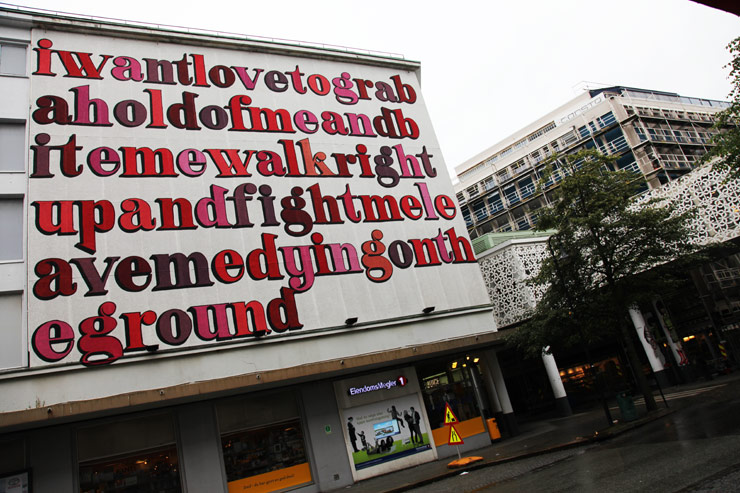
Ben Eine (photo © Jaime Rojo)
Technology
Hands down, a primary genesis for the far flung modern embrace of Street Art/Urban Art/Graffiti/public art lies in the booster rocket that propelled it into nearly everyone’s hands; digital communication and all its sundry technologies. From the early Internet websites and chat rooms accessed from your desktop to digital cameras and photo sharing platforms like Flickr in the early-mid 2000s to ever more sophisticated search technology and its accompanying algorithms, to blogs, micro blogs, and social media platforms, to the first generations of laptops and tablets, iPhones and Android devices; the amazing and democratizing advance of these communicative technologies have allowed more of us to access and share images, videos, experiences and opinion on a scale never before imagined – entirely altering the practice of art in the streets.
Where once there had been insular localized clans of aerosol graffiti writers who followed arcane codes of behavior and physical territoriality known primarily to only them in cities around the world, now new tribes coalesced around hubs of digital image sharing, enabling new shared experiences, sets of rules, and hierarchies of influence – while completely dissolving others.
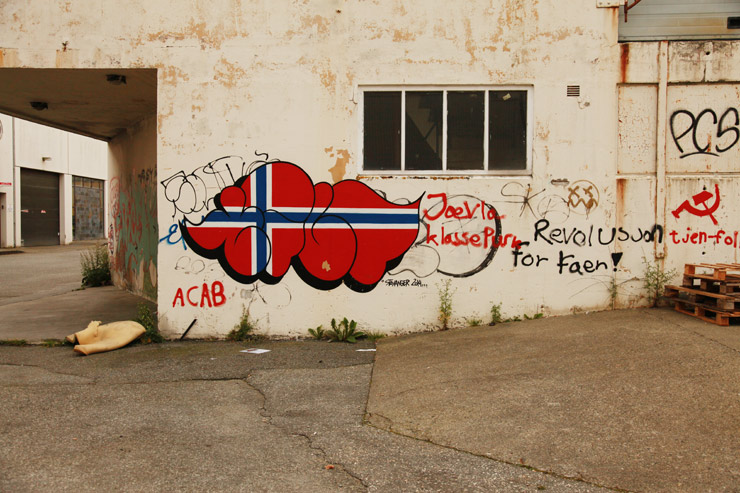
Tilt (photo © Jaime Rojo)
As old guards re-invented a place for themselves or disappeared altogether, a new order was being remixed in front our eyes. There were a lot of strangers in the room – but somehow we got used to it. Rather than making street art pieces for your local peers, artists began making new compositions for somebody’s phone screen in London or Honolulu or Shanghai.
Cut free from soil and social station, now garden variety hoodlums and brilliant aesthetes were commingling with opportuning art collectors, curious gallerists, unctuous opinionators, punctilious photographers and fans… along with product makers, promoters, art-school students, trend watchers, brand managers, lifestyle marketers, criminologists, sociologists, journalists, muckrakers, academics, philosophers, housewives, and makers of public policy. By virtue of climbing onto the Net everyone was caught in it, now experiencing the great leveling forces of early era digital communications that decimated old systems of privilege and gate keeping or demarcations of geography.
Looking forward we are about to be shaken again by technology that makes life even weirder in the Internet of Everything. Drone cams capture art and create art, body cams will surveil our activity and interactions, and augmented reality is merging with GPS location mapping. You may expect new forms of anonymous art bombing done from your basement, guerilla image projecting, electronic sign jamming, and perhaps you’ll be attending virtual reality tours of street art with 30 other people who are also sitting on their couches with Oculus Rifts on. Just watch.
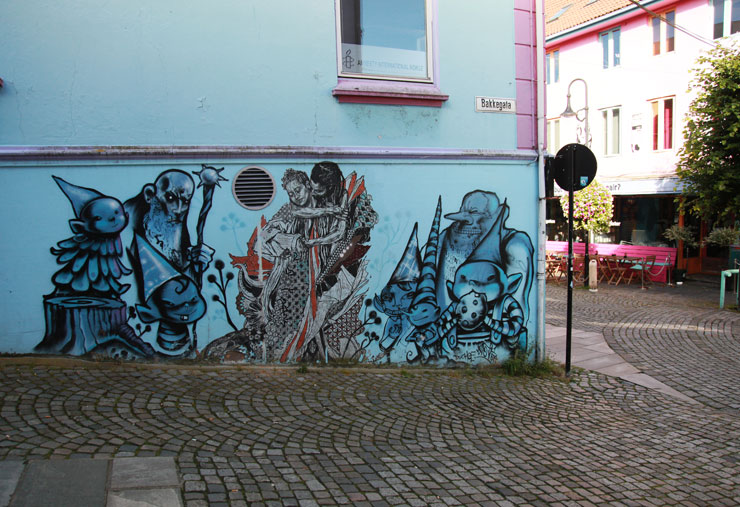
Swoon and David Choe (photo © Jaime Rojo)
Festivals
Thanks to the success of festivals like Nuart, myriad imitators and approximaters have mushroomed in cities everywhere. Conceived of philosophically as a series of stages for the exhibition of artistic chops with the proviso that a cultural dialogue is enriched and moved forward, not all festivals reach those goals.
In fact, we have no reason to expect that there is one set of goals whatsoever and the results are predictably variable; ranging from focused, coherent and resonant contributions to a city to dispersed, unmanageable parades of muddy mediocrity slammed with corporate logos and problematic patronage.
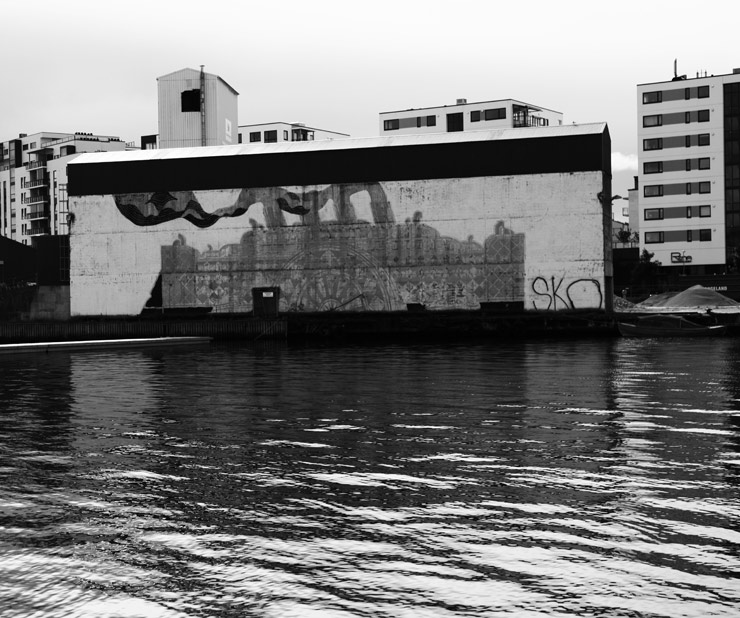
MCity (photo © Jaime Rojo)
Some festivals are truly grassroots and managed by volunteers like Living Walls in Atlanta or MAUI in Fanzara, Spain. Others are privately funded by real estate interests like Miami’s Wynwood Walls or business improvement district initiatives like the L.I.S.A. Project and LoMan Festival in Manhattan, or are the vision of one man who has an interest in Street Artists, like the now-discontinued FAME festival in the small town of Grottaglie, Italy and the 140 artist takeover of a town in Tunisia called Djerbahood that is organized by an art dealer.
In some ways these examples are supplanting the work of public art committees and city planners who historically determined what kind of art would be beneficial to community and a public space. Detractors advance an opinion that festivals and personal initiatives like this are clever ways of circumventing the vox populi or that they are the deliberate/ accidental tools of gentrification.
We’ve written previously about the charges of cultural imperialism that these festivals sometimes bring as well where a presumed gratitude for new works by international painting superstars actually devolves into charges of hubris and disconnection with the local population who will live with the artwork for months and years after the artist catches a plane home.
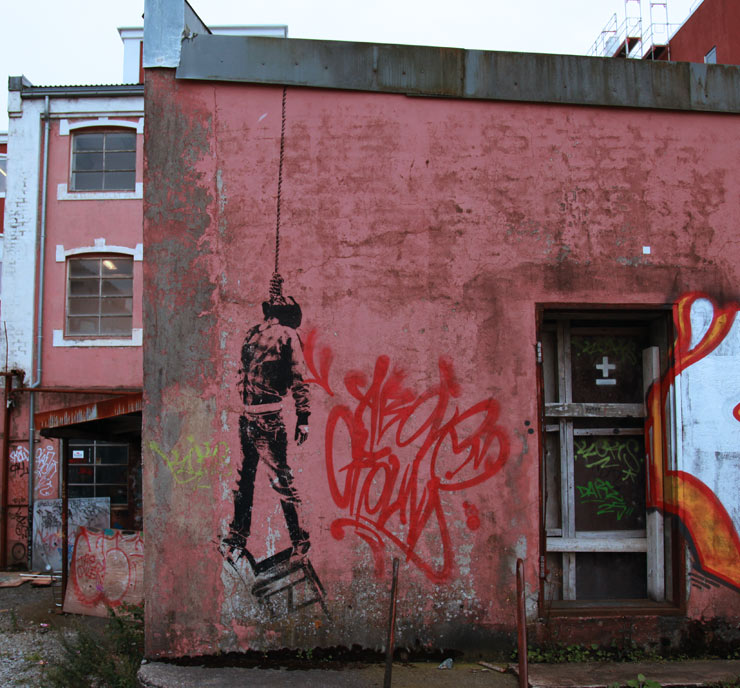
Dotmasters (photo © Jaime Rojo)
Nonetheless, far from Street Arts transgressive and vandalous roots, the sheer number of Street Art/Urban Art/Mural Art festivals that have popped up – either freestanding or as adjuncts to multi-discipline “arts” festivals – is having the effect of creating a wider dialogue for art in the public sphere.
As artists are invited and hosted and scissor lifts are rented and art-making materials are purchased, one quickly realizes that there are real costs associated with these big shows and the need for funding is equally genuine. Depending on the festival this funding may be private, public, institutional, corporate, or an equation that includes them all.
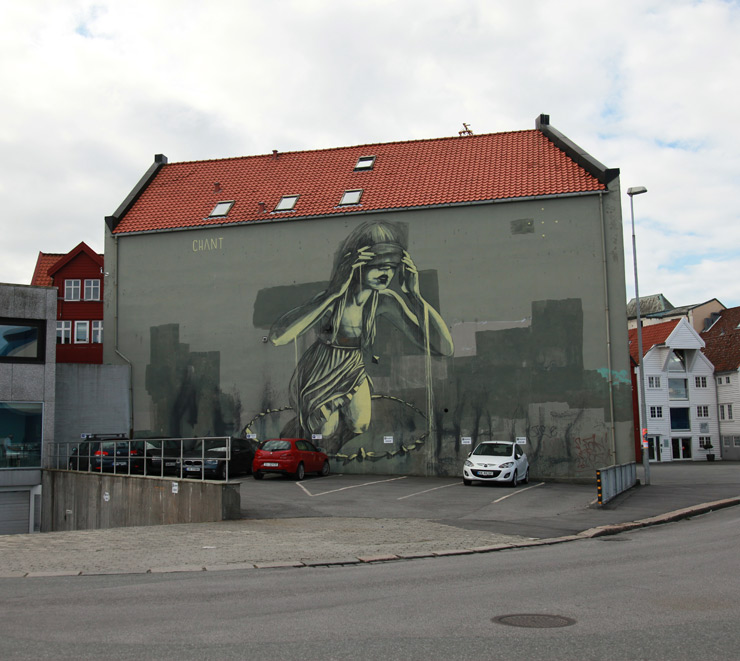
Faith47 (photo © Jaime Rojo)
As you may expect, the encroachment of commercial interests is nearly exhaustive in some of these newer festivals, so eager are the merchants to harvest a scene they had little or no hand in planting. Conceived of as vehicles for corporate messaging, they custom-build responsive websites, interactive Apps, clouds of clever #hashtags, company logos, Instagram handles, branded events and viral lifestyle videos with logos sprinkled throughout the “content”.
You may recognize these to be the leeching from an organic subculture, but in the case of this amorphous and still growing “Street Art Scene” no one yet knows what lasting scars this lifestyle packaging will leave on the Body Artistic, let alone civic life.
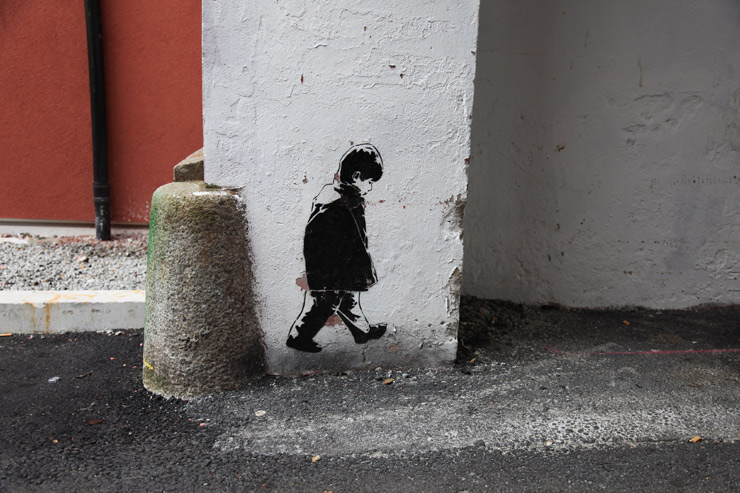
Icy & Sot (photo © Jaime Rojo)
Stylistically these festivals can be a grab bag as well with curatorial rigor often taking a back seat to availability, accessibility, and the number of interested parties making nominations. While some festivals are clearly leaning toward more traditional graffiti schools, others are a hodgepodge of every discernable style from the past fifty years, sometimes producing an unpleasant sense of nausea or even tears over regrettable missed opportunity.
Clearly the quality is often uneven but, at the danger of sounding flip or callous, it’s nothing that is not easily remedied by a few coats of paint in the months afterward, and you’ll see plenty of that. Most art critics understand that the metrics used for measuring festival art are not meant to be the same as for a gallery or museum show. Perhaps because of the entirely un-curated nature of the organic Street Art scene from which these festivals evolved in some part, where no one asks for permission (and none is actually granted), we are at ease with a sense of happenstance and an uneven or lackluster presentation but are thrilled when concept, composition, and execution are seated firmly in a brilliant context.
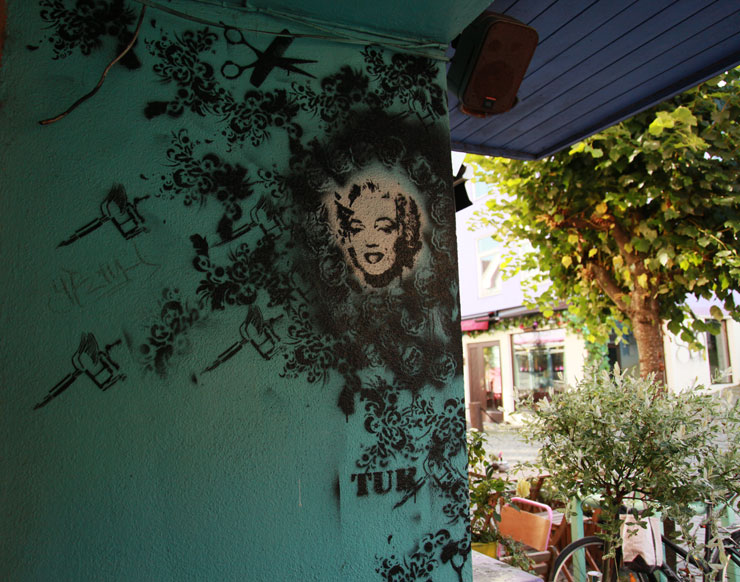
TUK (photo © Jaime Rojo)
Murals
Finally, murals have become big not just in size but popularity. Every week a street artist is exclaiming that this mural is the biggest they have every made. It is a newfound love, a heady honeymoon, a true resurgence of muralism. Even though you can’t rightly call this legal and sanctioned work true Street Art, many former and current Street Artists are making murals.
Un-civically minded urban art rebels have inferred that Street Art has softened, perhaps capitulated to more mainstream tastes. As Dan Witz recently observed, “Murals are not a schism with Street Art as much as a natural outgrowth from it.” We agree and add that these cheek-by-jowl displays of one mural after another are emulating the graffiti jams that have been taking place for years in large cities both organic and organized.
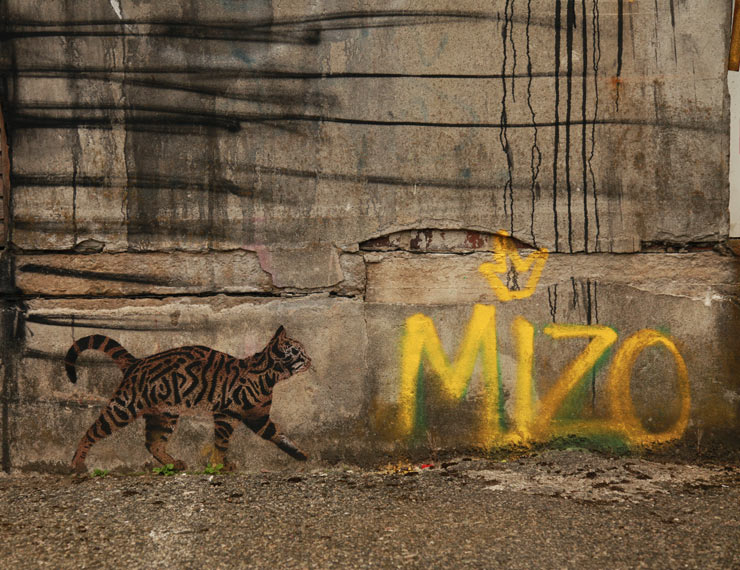
JPS . Mizo (photo © Jaime Rojo)
From illustration to abstraction to figurative to surreal and even letter-based, this eclectic injection of styles won’t bring to mind what one may typically associate with the homegrown community mural. Aside from the aforementioned festivals that are festooning neighborhoods, the growth in mural-making may be attributable to a trend of appreciation for Do It Yourself ( D.I.Y.) approaches and the ‘makers’ movements, or a desire to add a personal aspect to an urban environment that feels unresponsive and disconnected.
Philadelphia has dedicated 30 years to their Mural Arts Program and relies on a time-tested method of community involvement for finalization of designs and most municipal murals have a certain tameness that pleases so many constituencies that no one particularly cares for them.
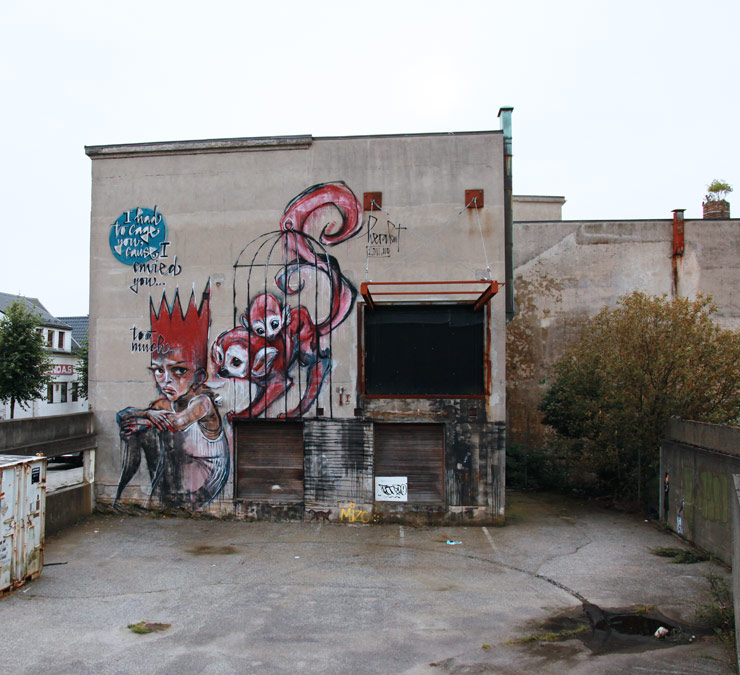
Herakut (photo © Jaime Rojo)
The New Muralism, as we have been calling it, that is popping up is often more autonomous and spirited in nature than community mural initiatives of the past with their ties to the socio-political or to historical figures and events. Here there are few middlemen and fewer debates. Artists and their advocates approach building owners directly, a conversation happens, and a mural goes up.
In the case of upstart community programs like the Bushwick Collective in Brooklyn, one trusted local person is ambassador to a neighborhood, insuring that community norms about nudity or politics are respected but otherwise acts purely as facilitator and remains hands-off about the content.
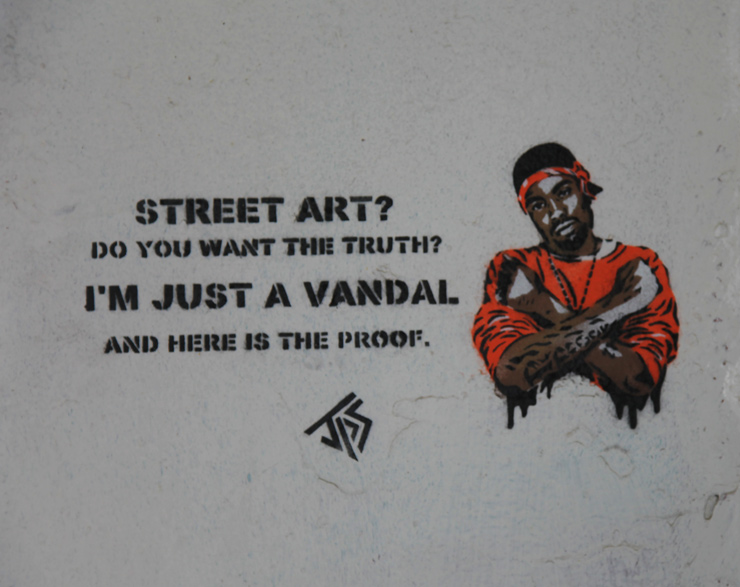
JPS (photo © Jaime Rojo)
On that topic, effectively a form of censoring often takes place with murals – another distinguishing characteristic from Street Art. Given the opportunity to fully realize an elaborate composition, normally wild-eyed and ornery aerosol rebels bend their vision to not offend. Sometimes an artist can have more latitude and you may find a mural may clearly advocate a political or social point of view, as in recent murals addressing police brutality, racism, and inequality in many US cities, anti-corruption sentiments in Mexico, and pro-marriage equality in France and Ireland.
This new romance with the mural is undoubtedly helping artists who would like to further explore their abilities in more labor-intensive, time absorbing works without having to look over their shoulder for an approaching officer of the law. It is a given that what they gain in polished presentation they may sacrifice as confrontational, radical, contraventional, even experimental. The resulting images are at times stunning and even revelatory, consistent with the work of highly skilled visionaries, as if a new generation of painters is maturing before our eyes in public space where we are all witness.
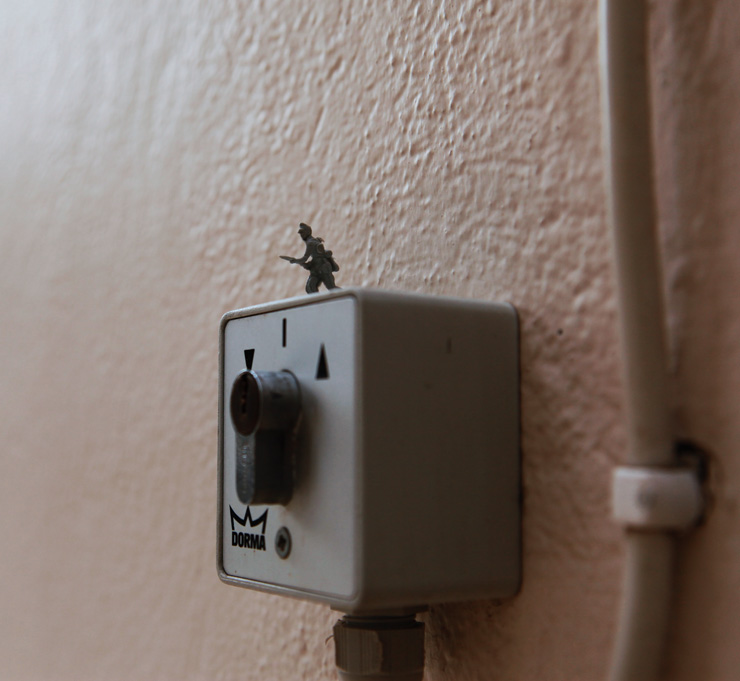
Artist Unknown (photo © Jaime Rojo)
Moving Forward
Despite the rise in festivals and mural programs and the growing volume and sophistication of technology for sharing of the images, Street Art is still found in unexpected places and the decay of neglected spaces. As before and well into the future these self ordained ministers of mayhem will be showing their stuff in the margins, sometimes identified, sometimes anonymous, communicating with the individual who just happens to walk by and witness the work. The works will impart political or social messages, other times a simple declaration that says, “I’m here.”
Whatever its form, we will be looking for it.
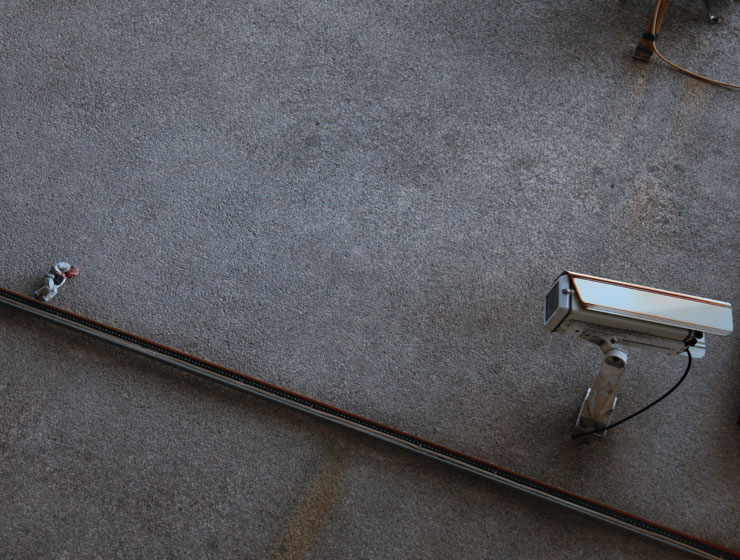
Isaac Cordal (photo © Jaime Rojo)
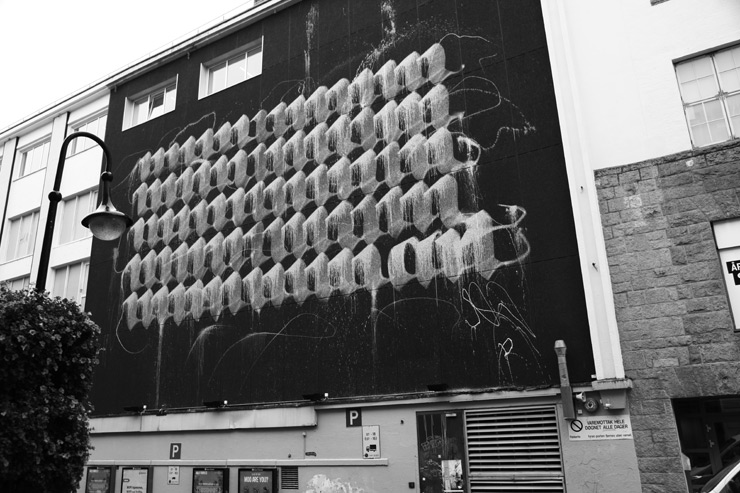
Niels Show Meulman (photo © Jaime Rojo)
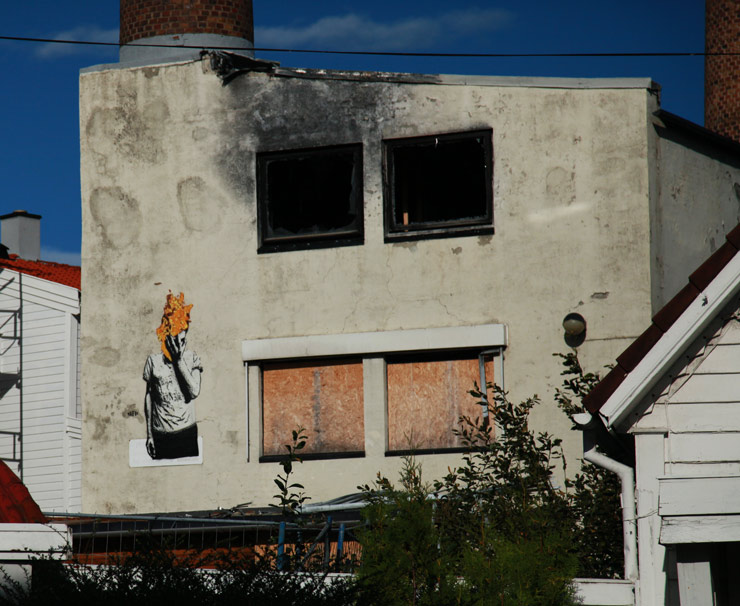
Nafir (photo © Jaime Rojo)
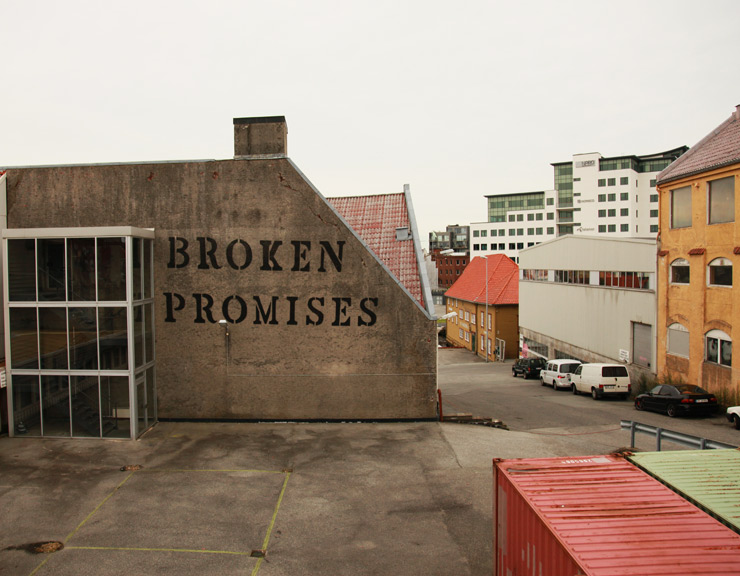
John Fekner (photo © Jaime Rojo)
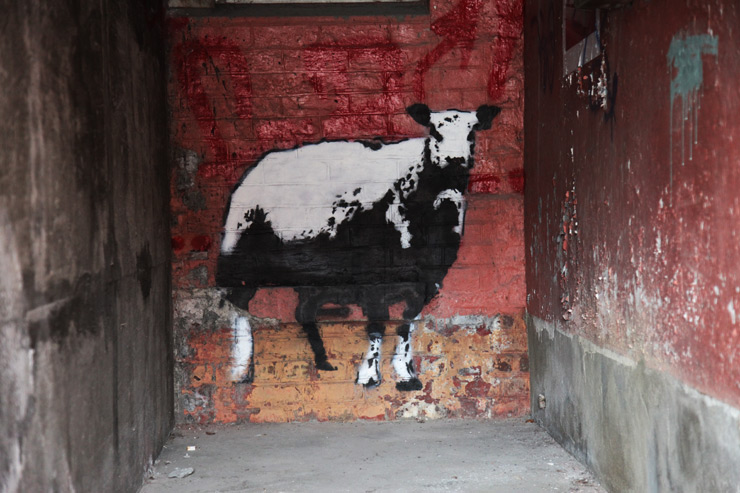
Blek le Rat (photo © Jaime Rojo)
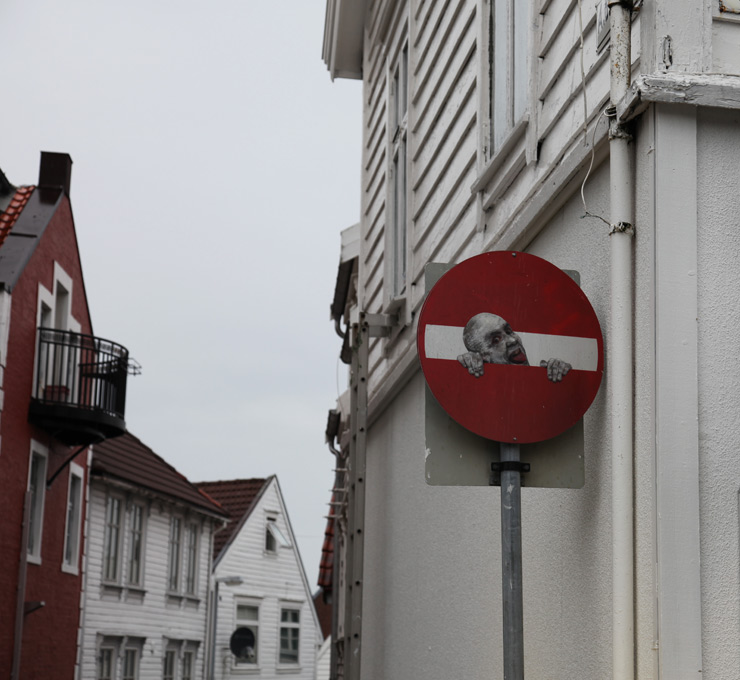
Dan Witz (photo © Jaime Rojo)
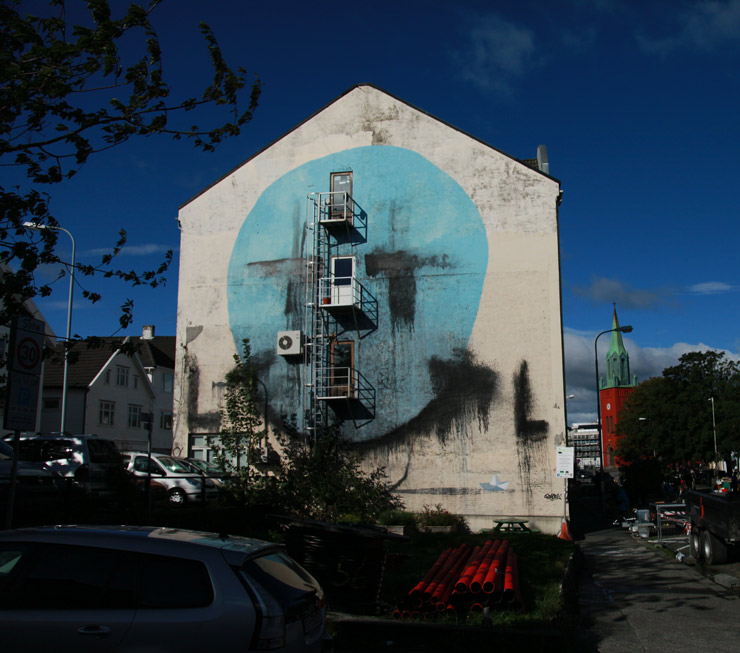
Site of an old piece by BLU (photo © Jaime Rojo)
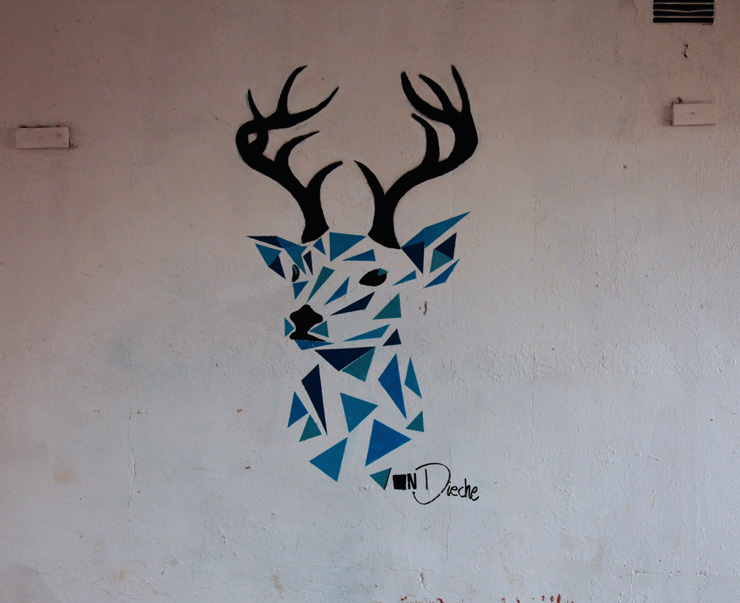
Dieche (photo © Jaime Rojo)
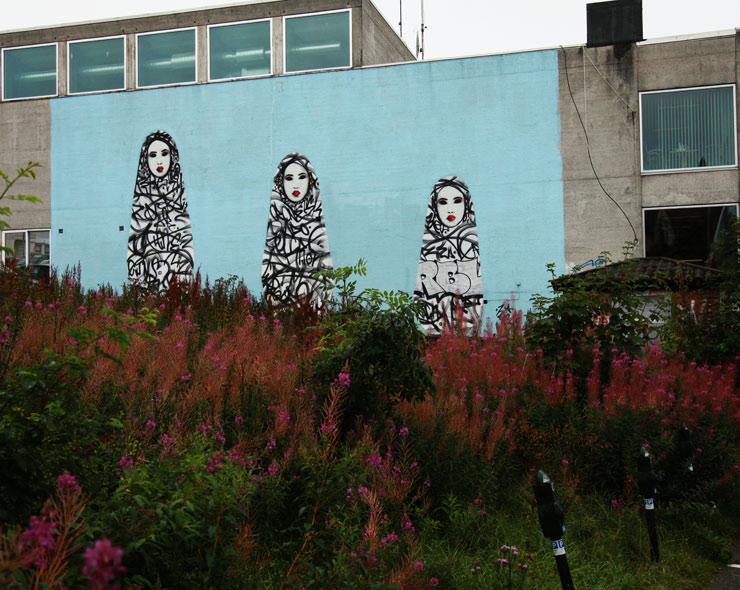
HUSH (photo © Jaime Rojo)
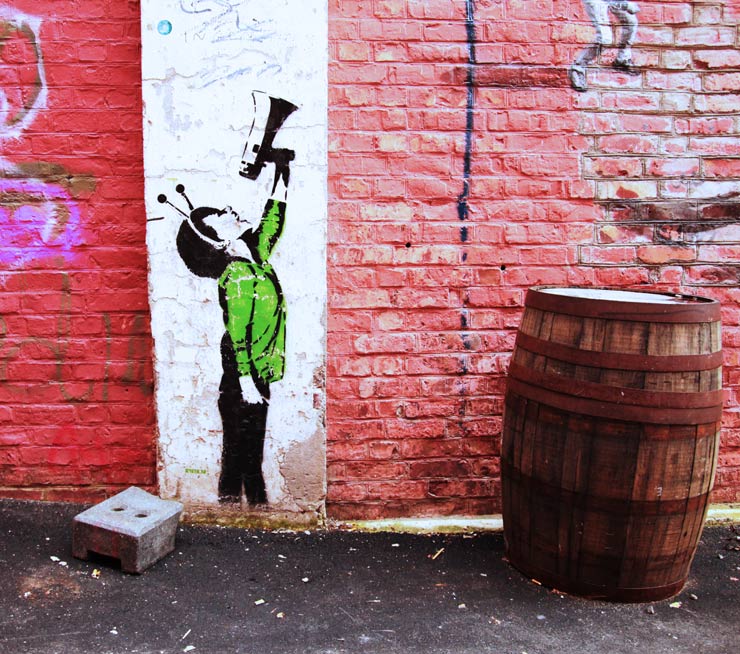
Dolk (photo © Jaime Rojo)
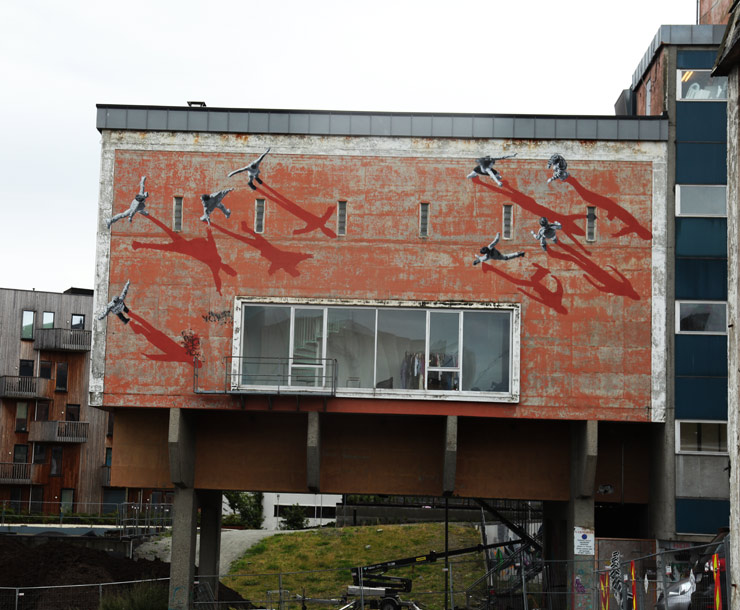
Strok (photo © Jaime Rojo)
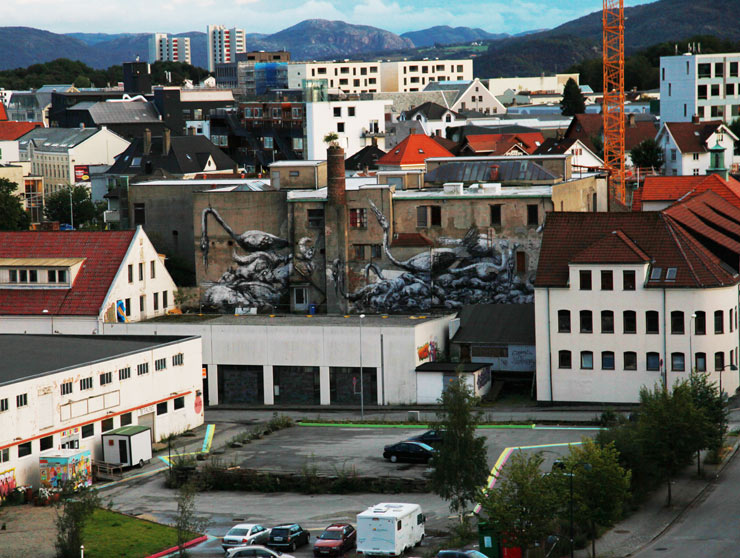
ROA (photo © Jaime Rojo)
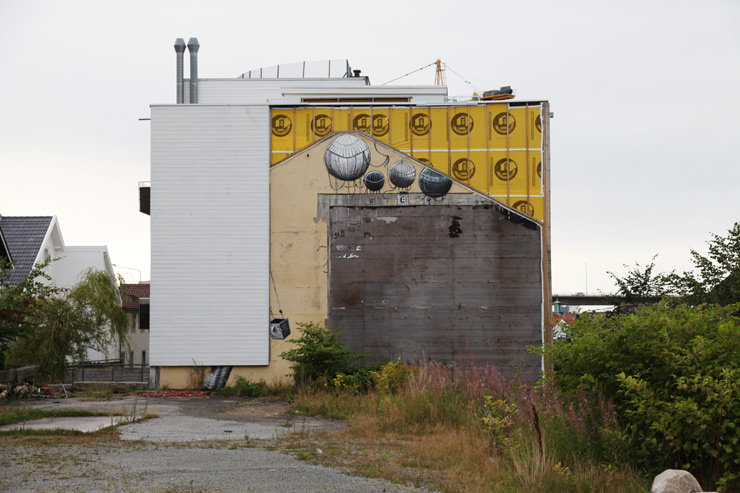
The remnants of a Phlegm piece from a previous edition of Nuart. (photo © Jaime Rojo)
<<>>><><<>BSA<<>>><<<>><><BSA<<>>><><<>BSA<<>>><<<>><><BSA
Please note: All content including images and text are © BrooklynStreetArt.com, unless otherwise noted. We like sharing BSA content for non-commercial purposes as long as you credit the photographer(s) and BSA, include a link to the original article URL and do not remove the photographer’s name from the .jpg file. Otherwise, please refrain from re-posting. Thanks!
<<>>><><<>BSA<<>>><<<>><><BSA<<>>><><<>BSA<<>>><<<>><><BSA
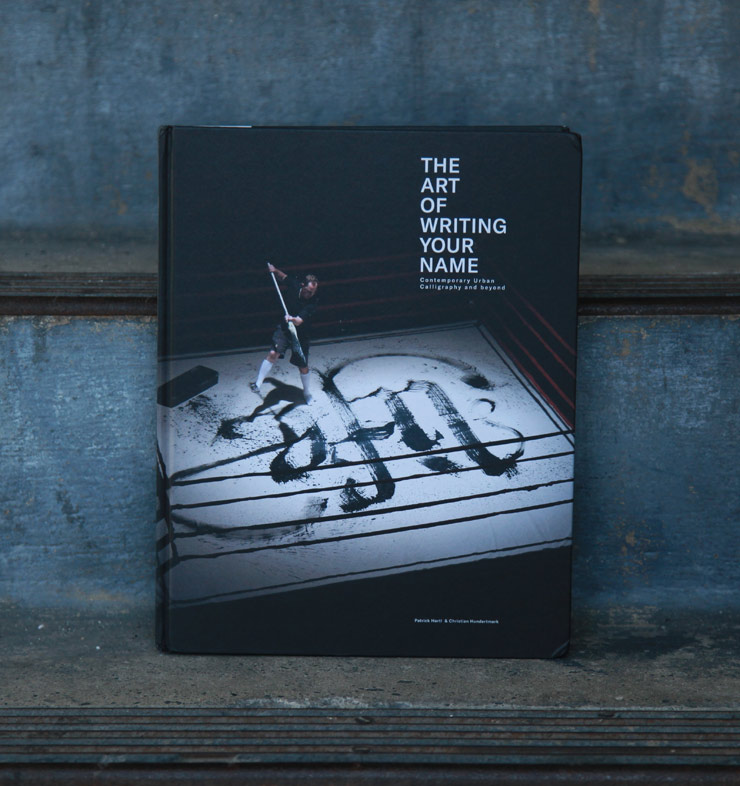
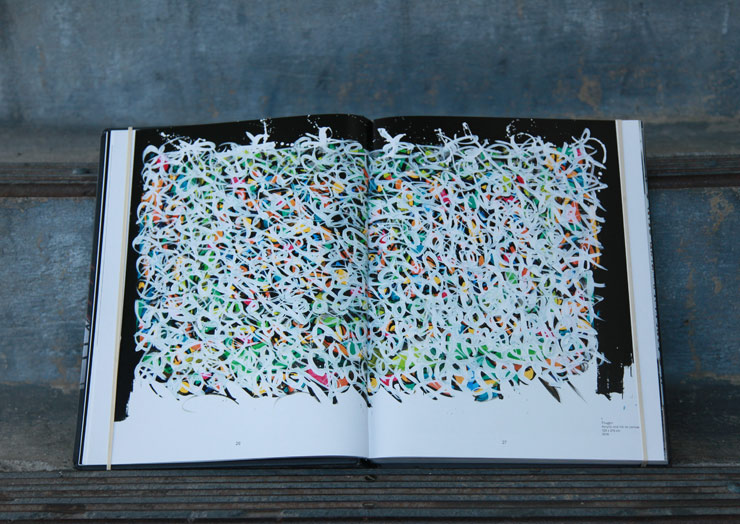
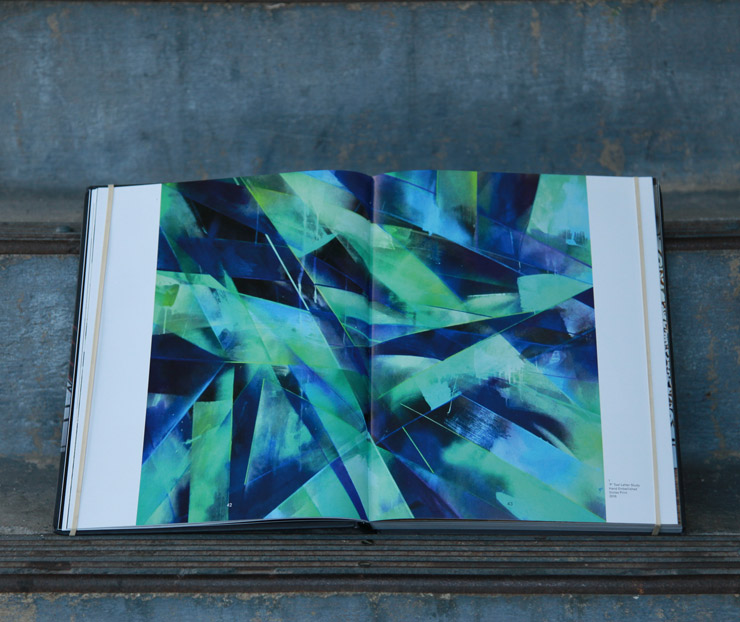
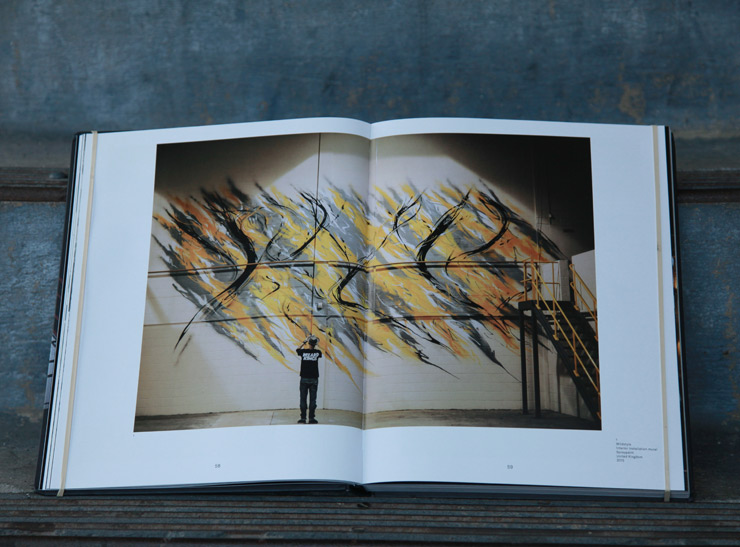
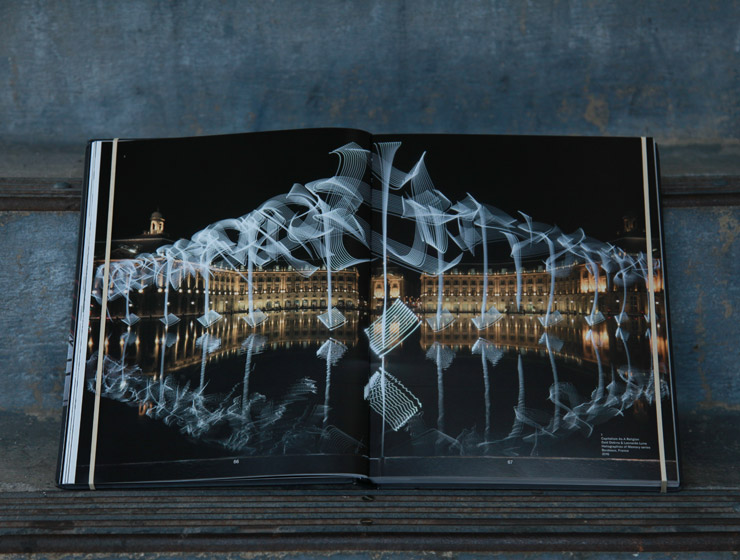
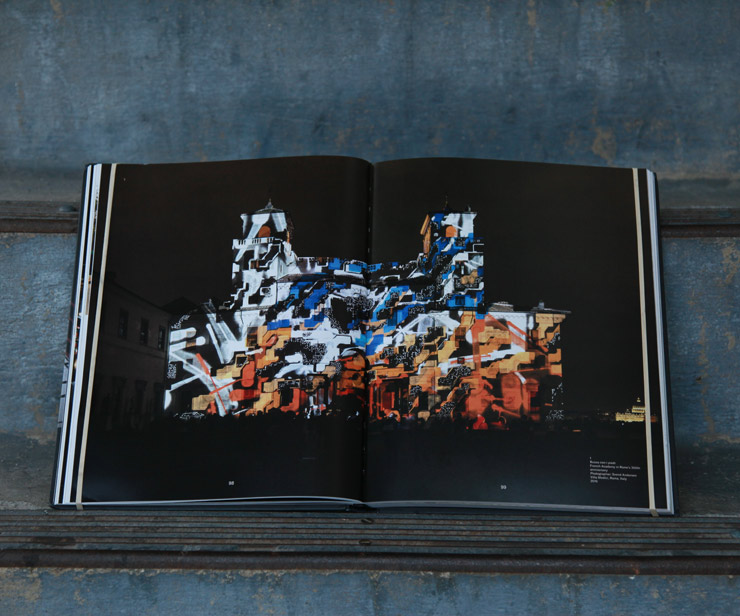
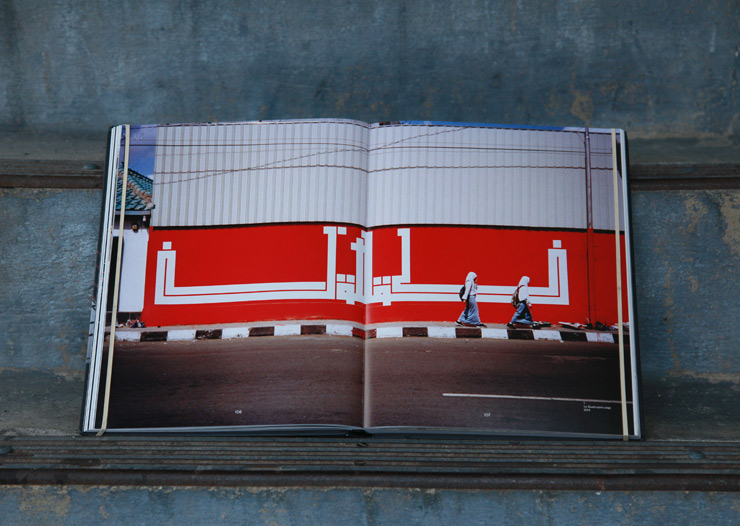
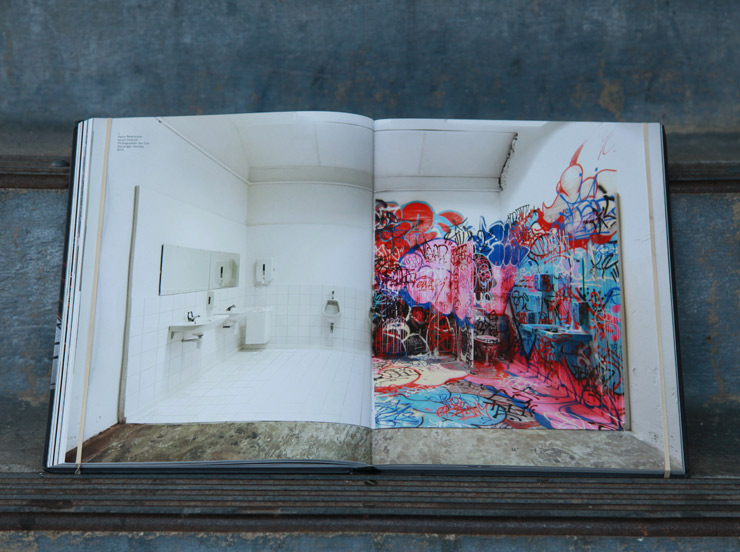
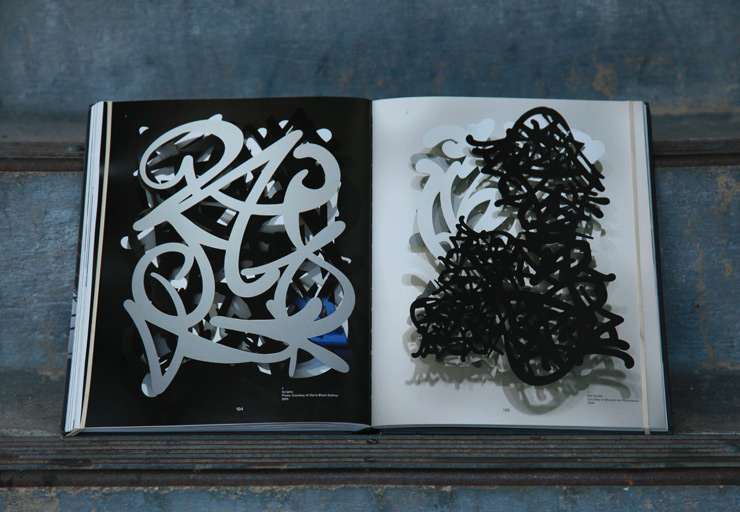
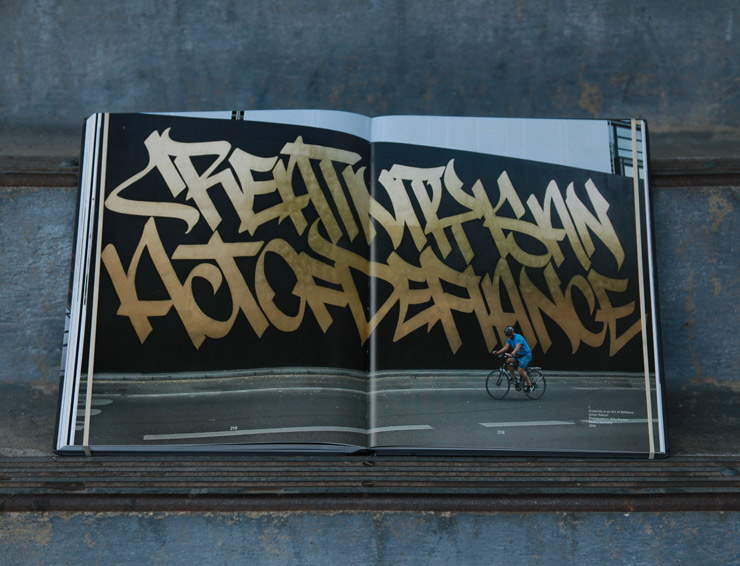
 BROOKLYN STREET ART LOVES YOU MORE EVERY DAY
BROOKLYN STREET ART LOVES YOU MORE EVERY DAY
